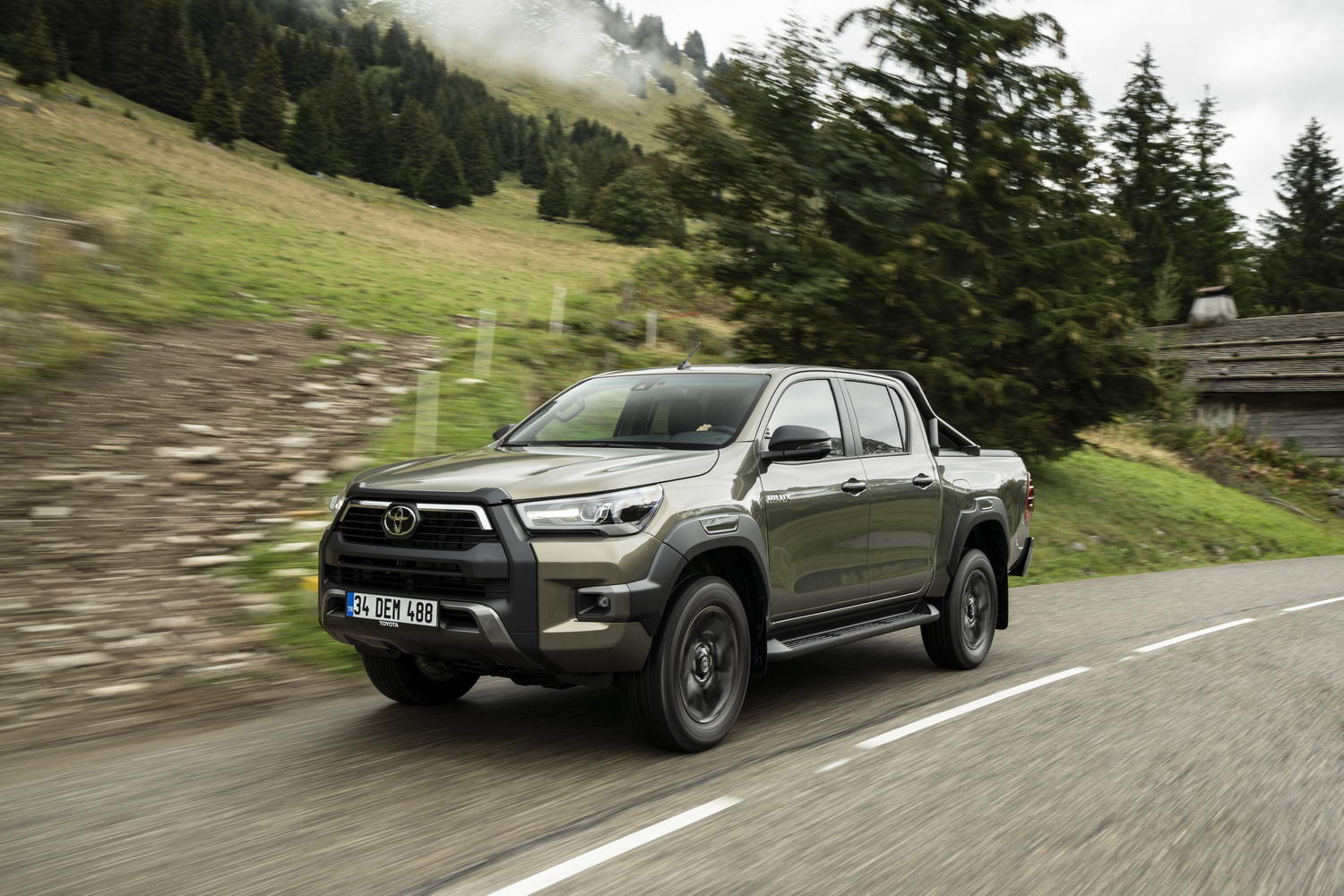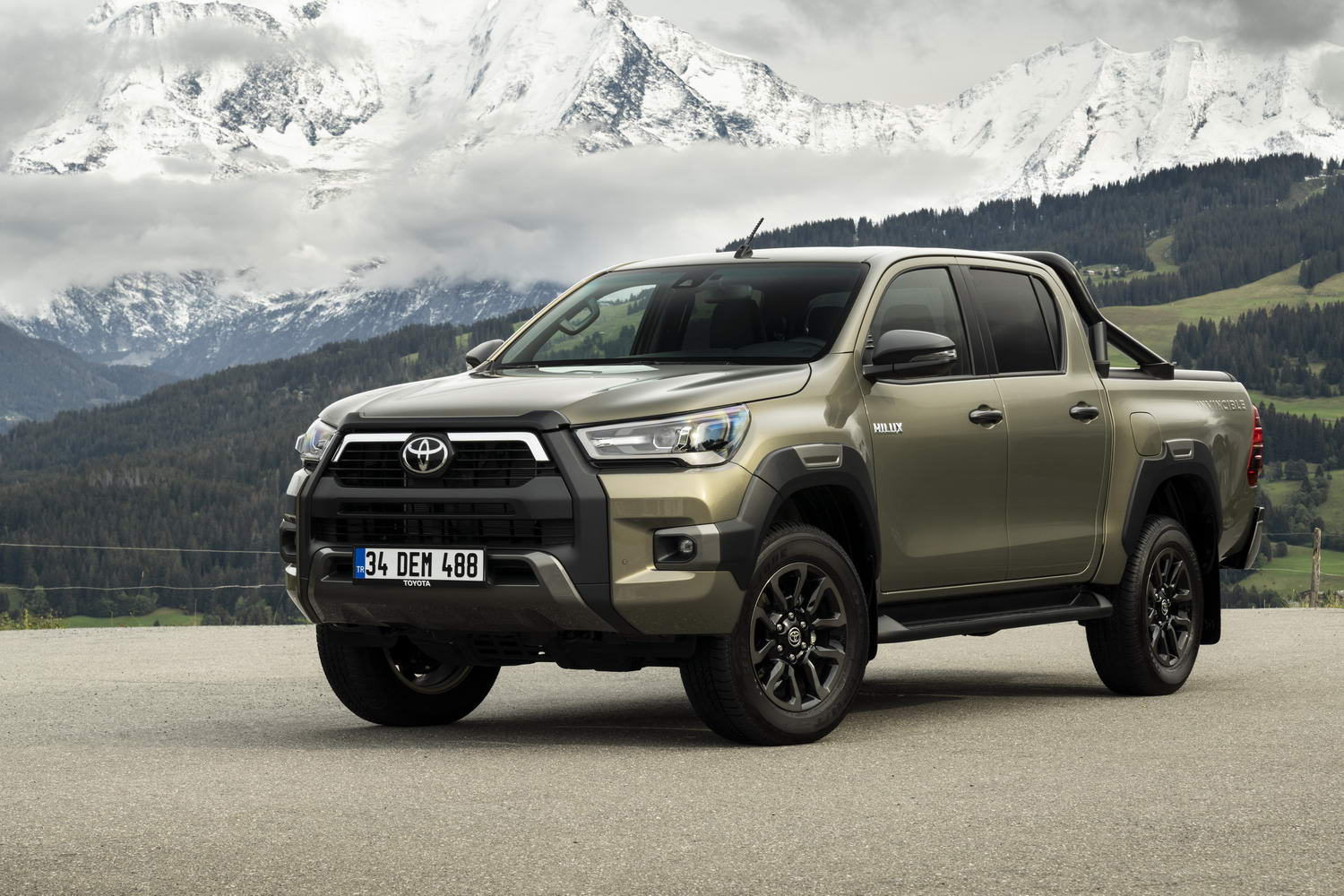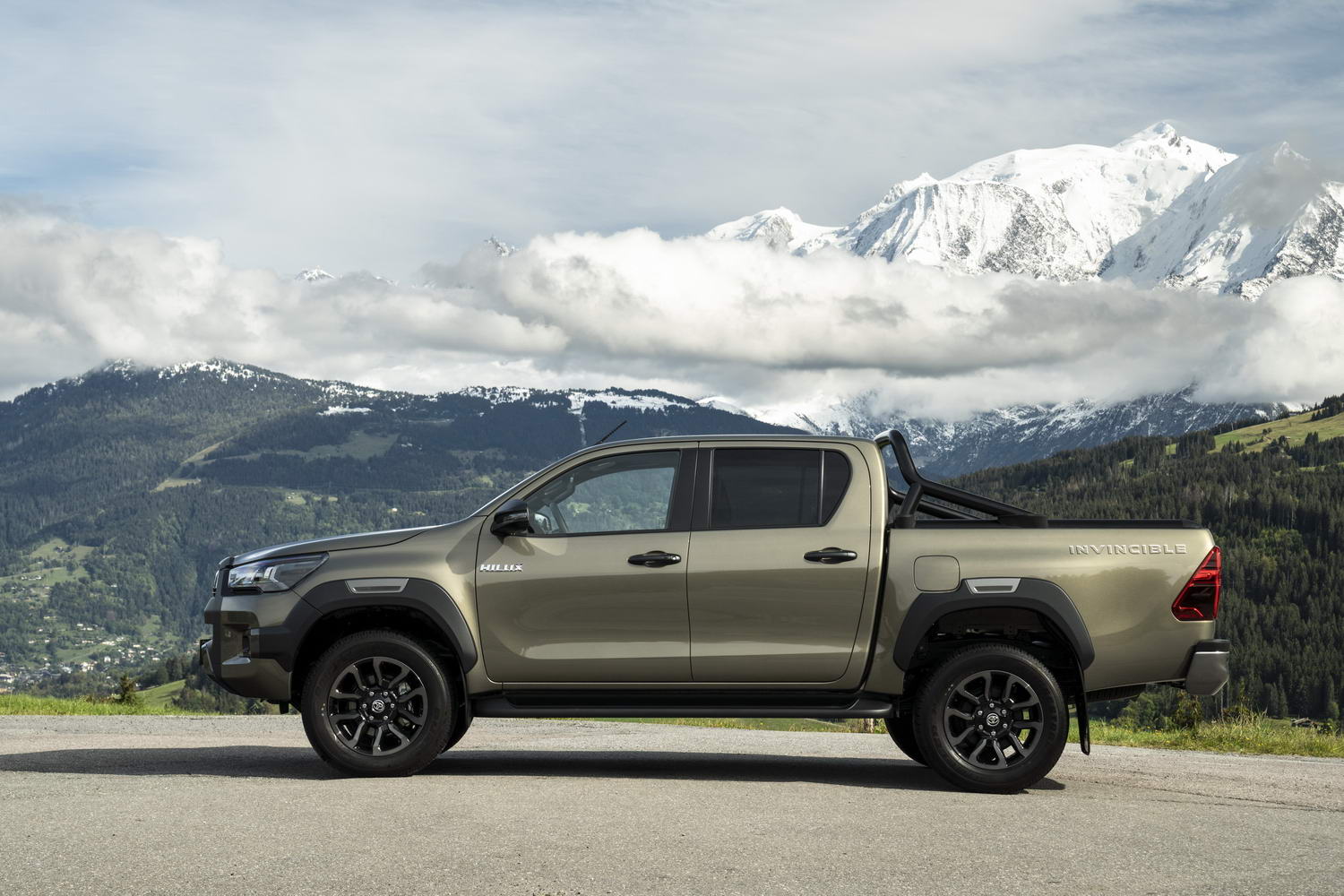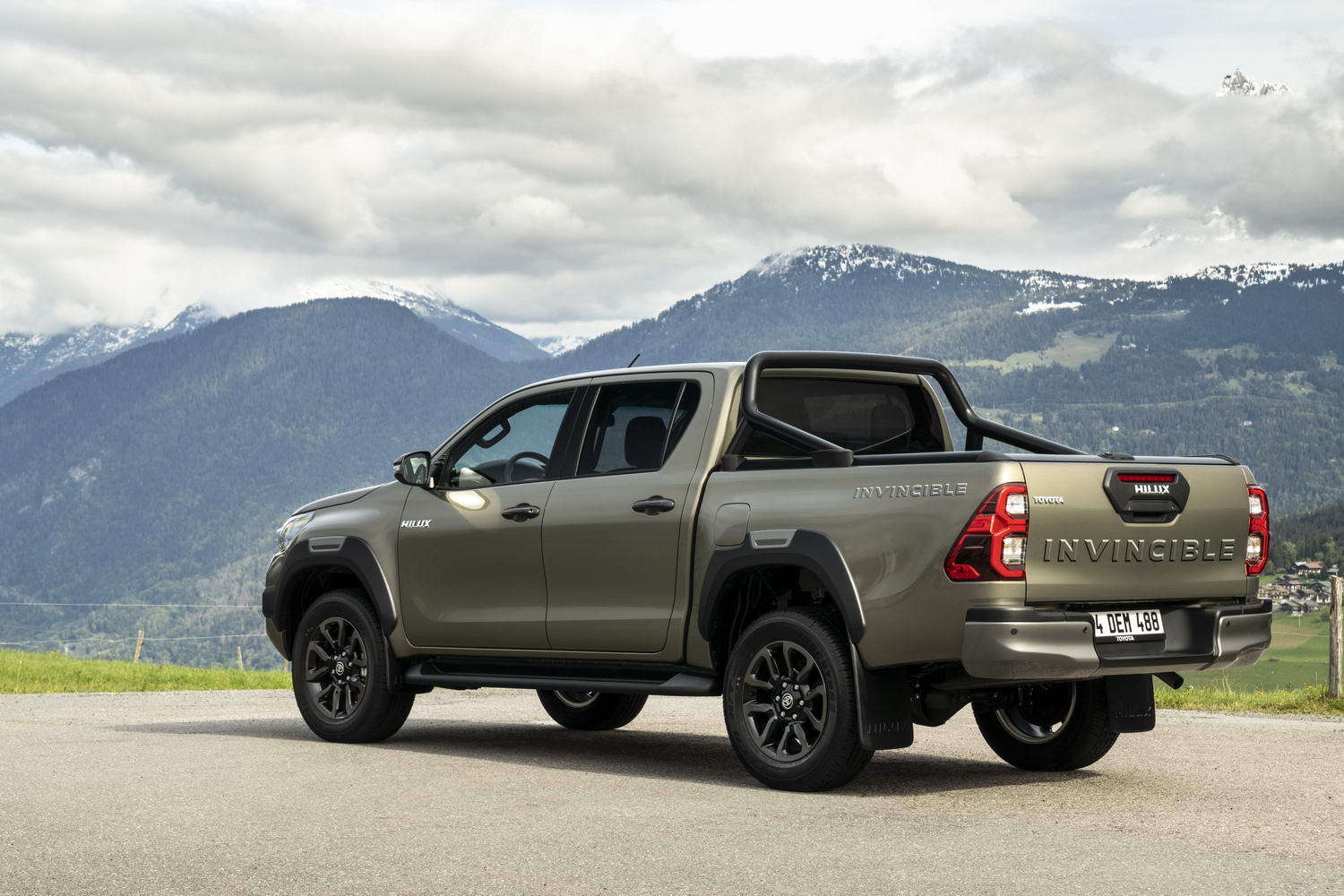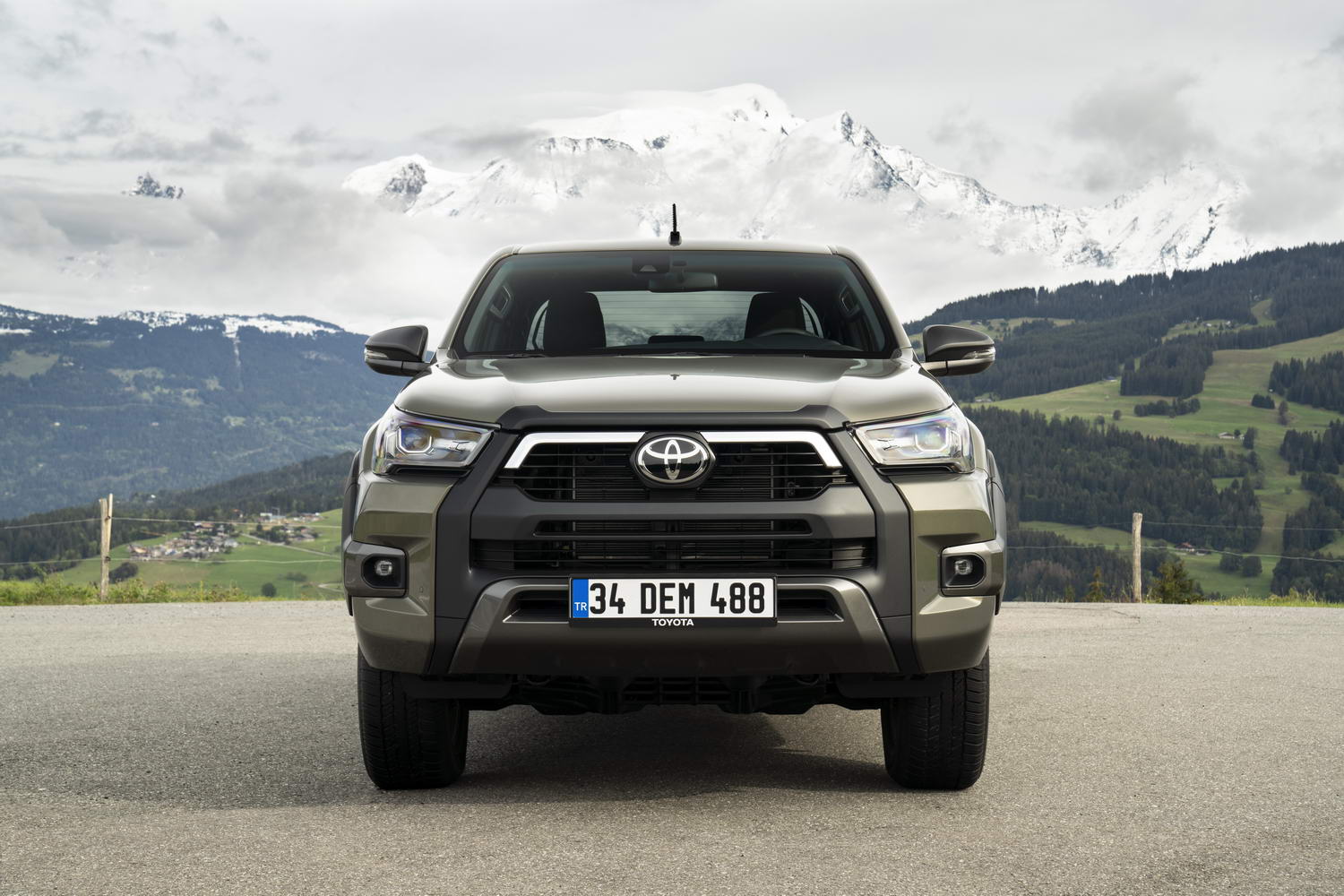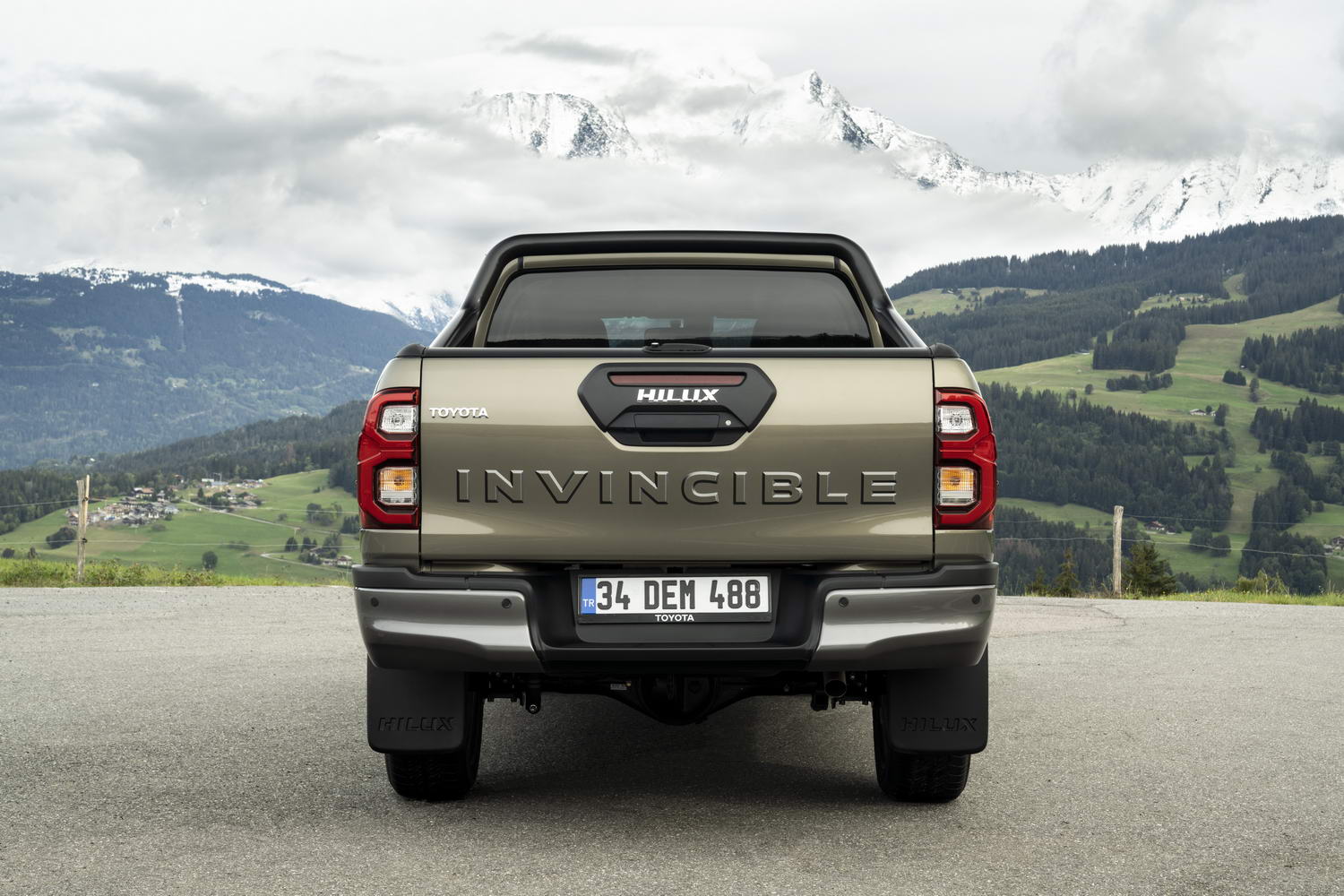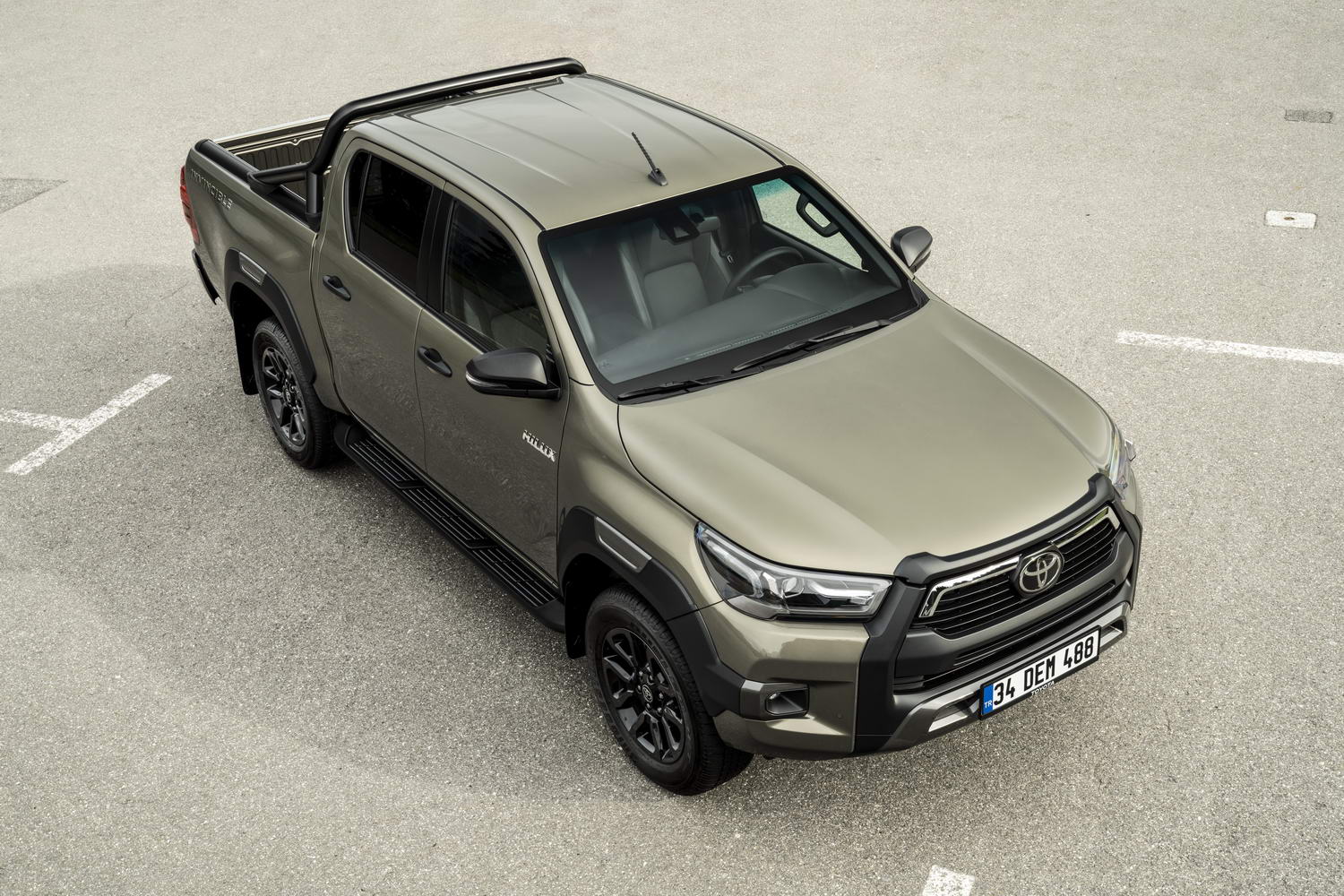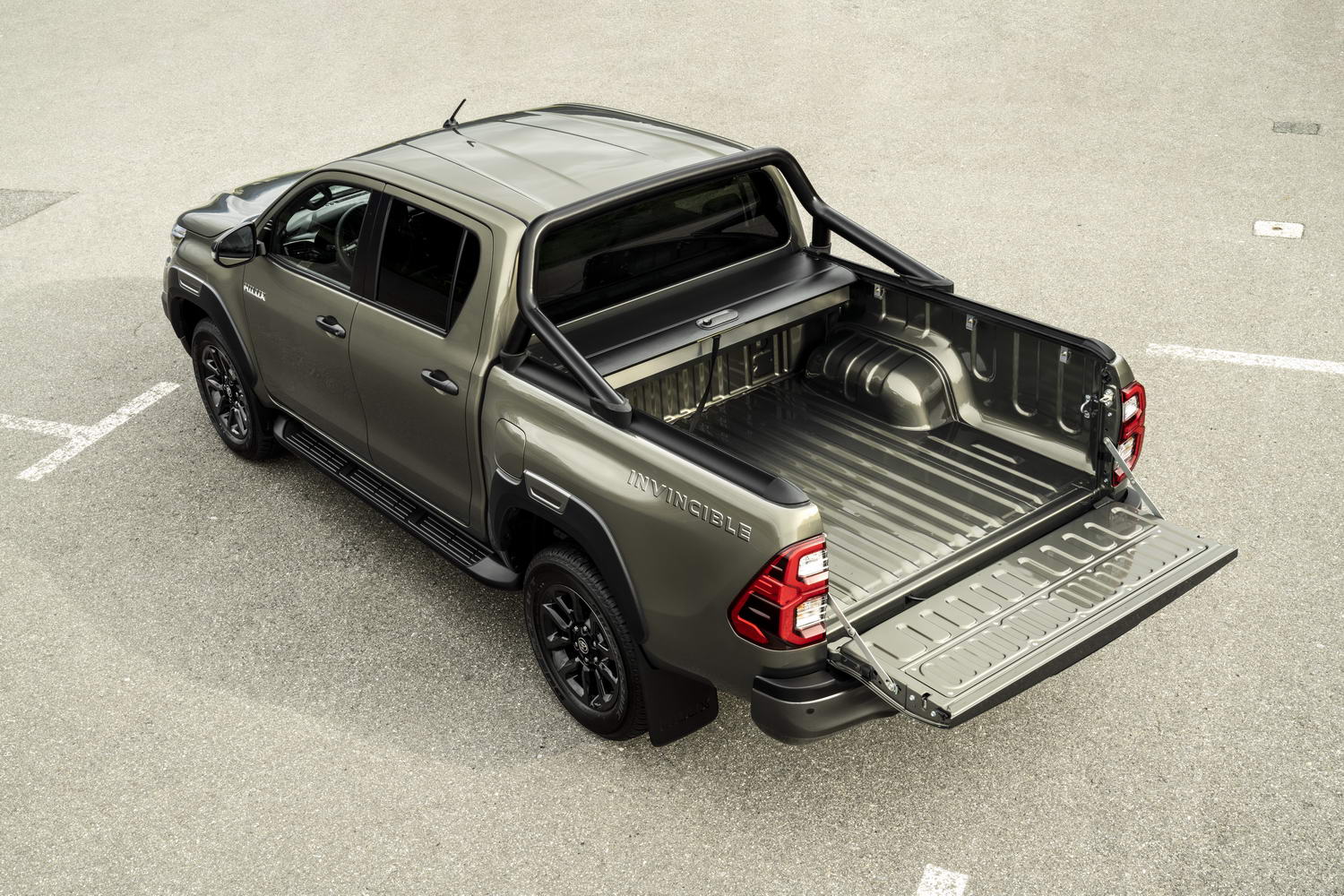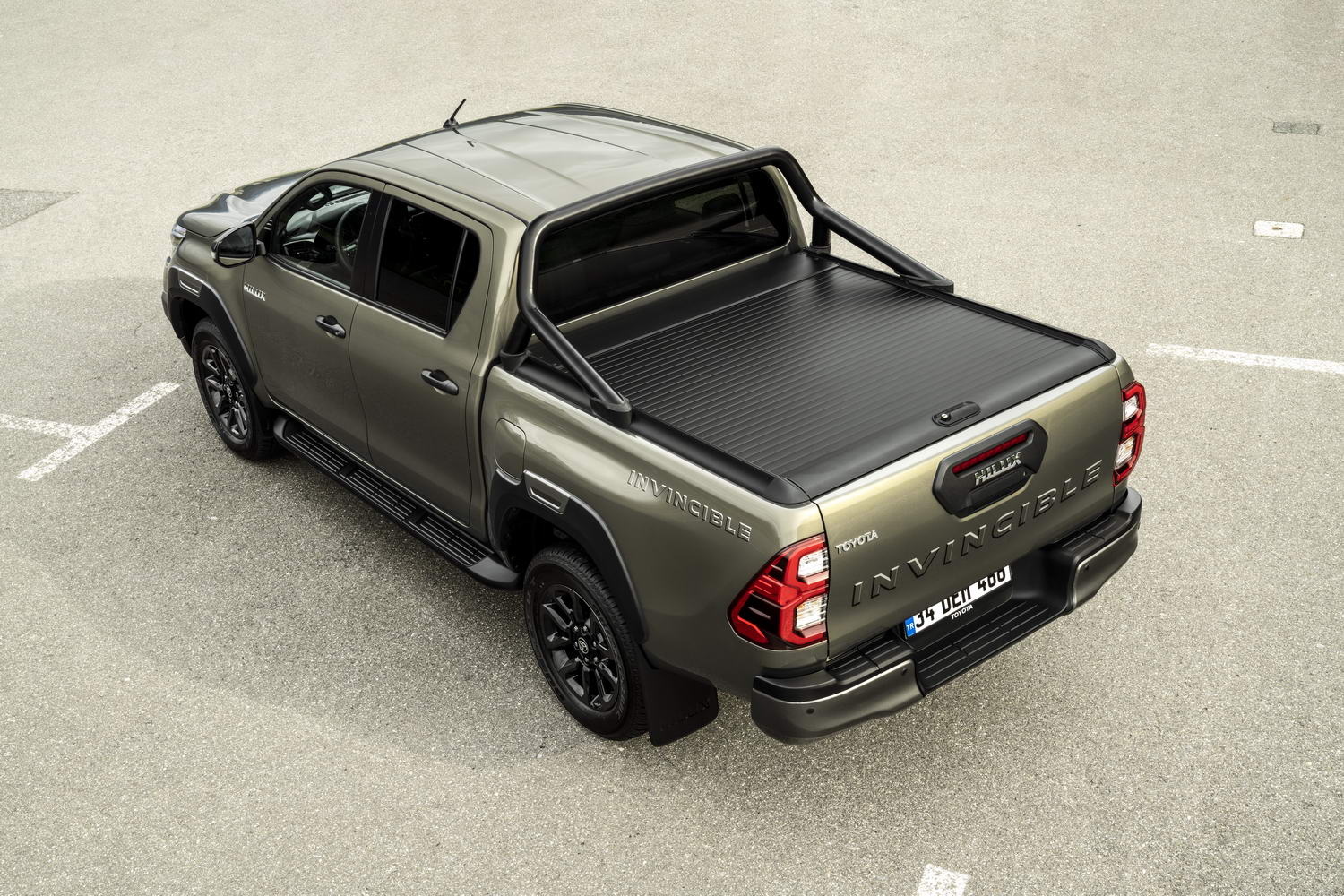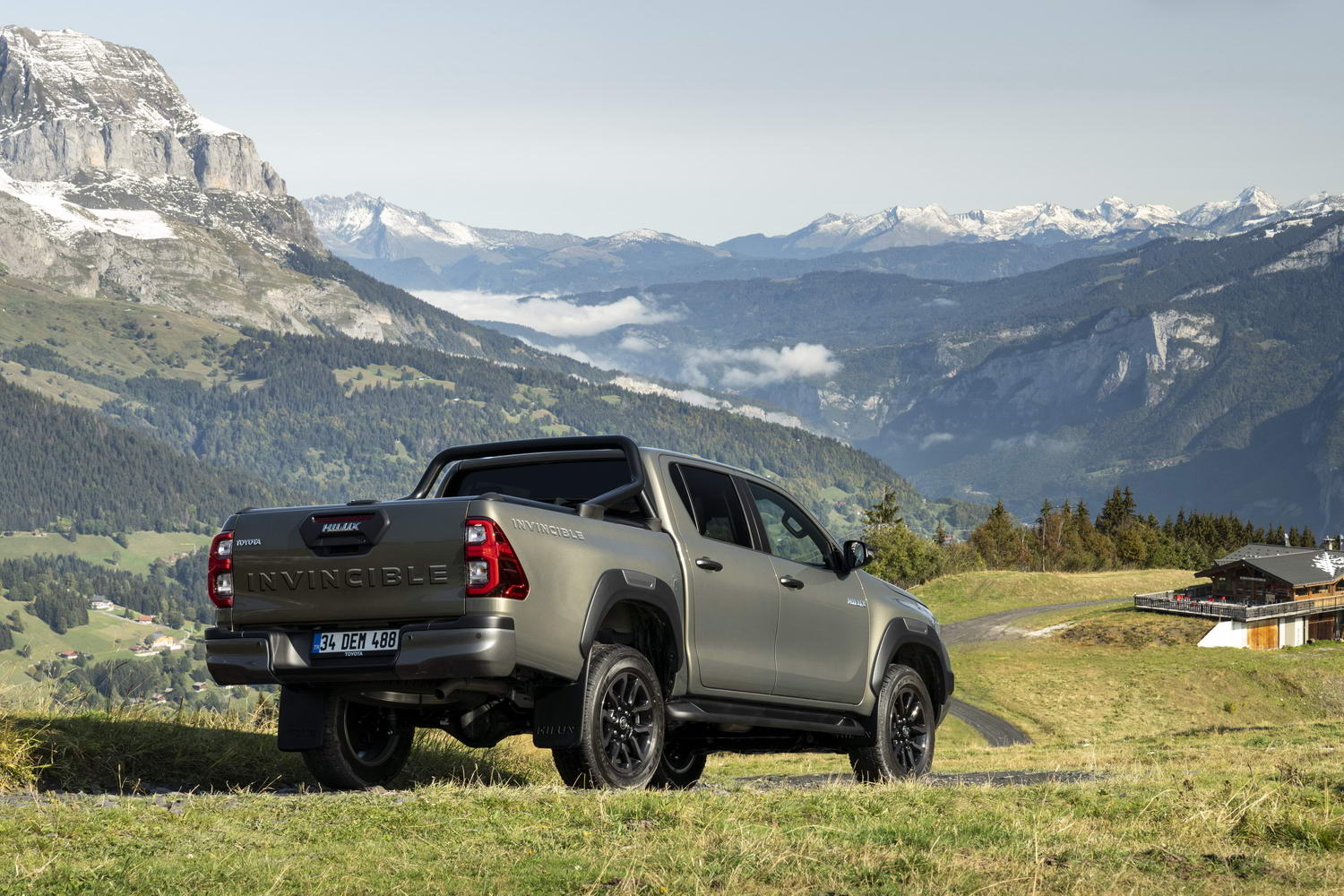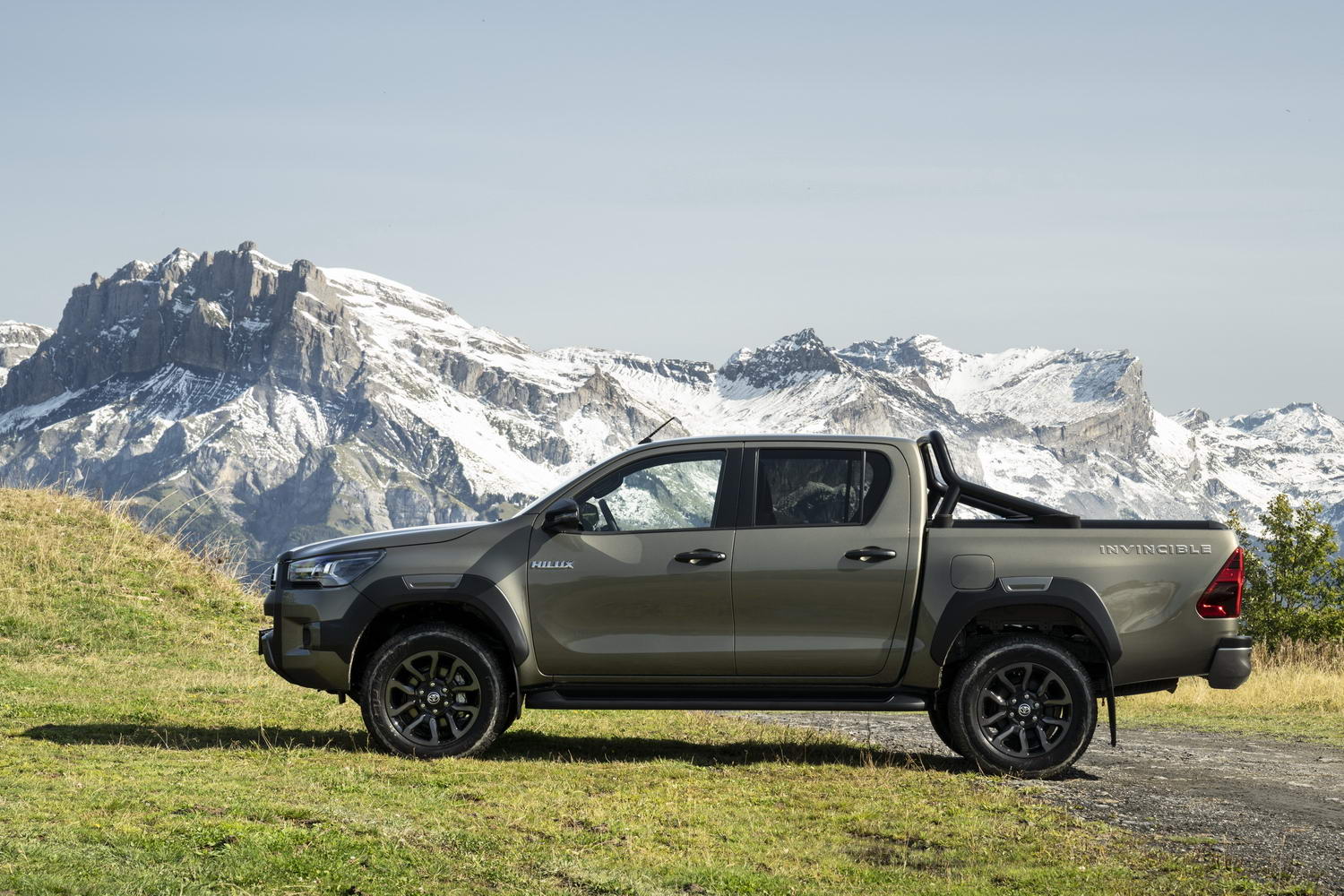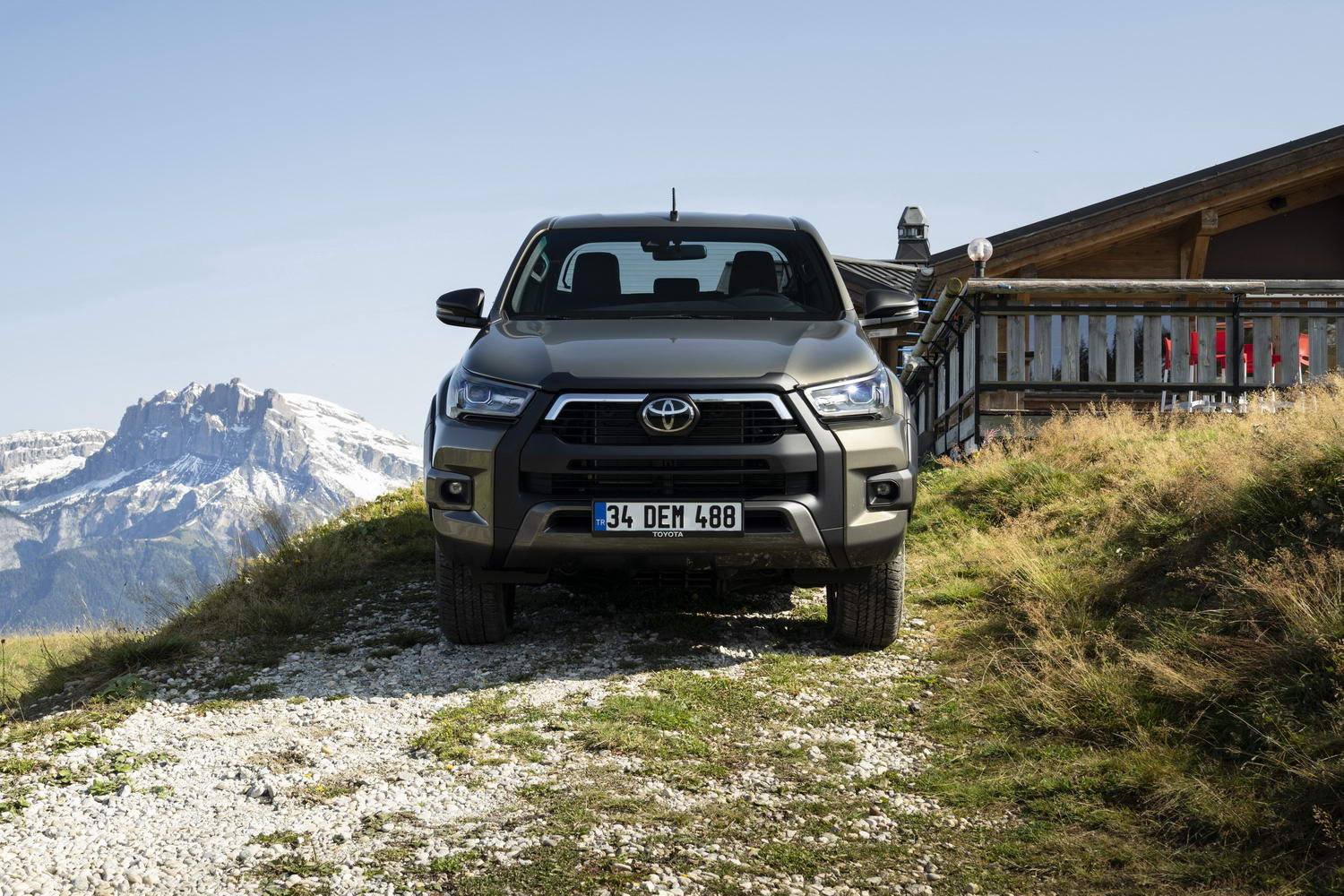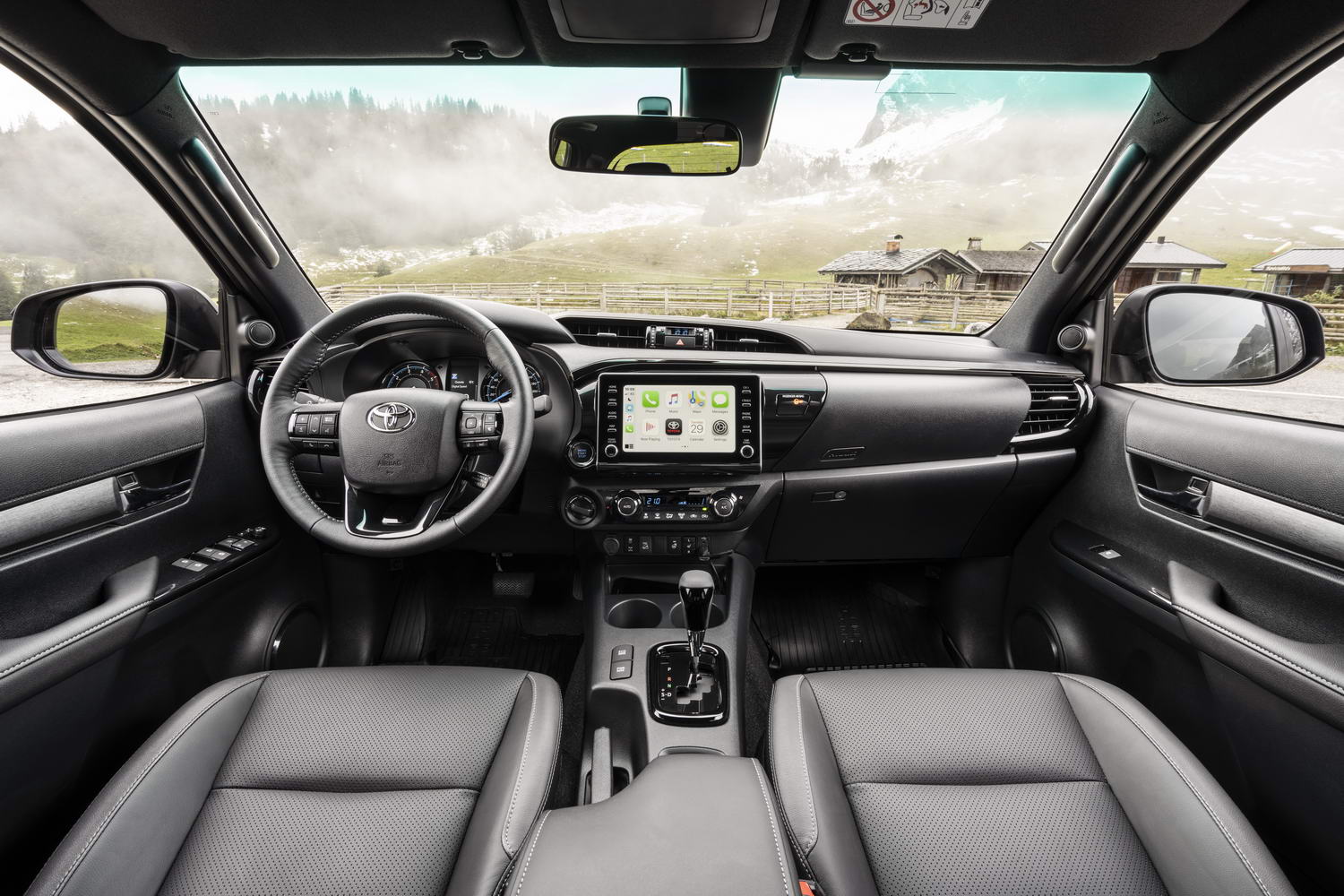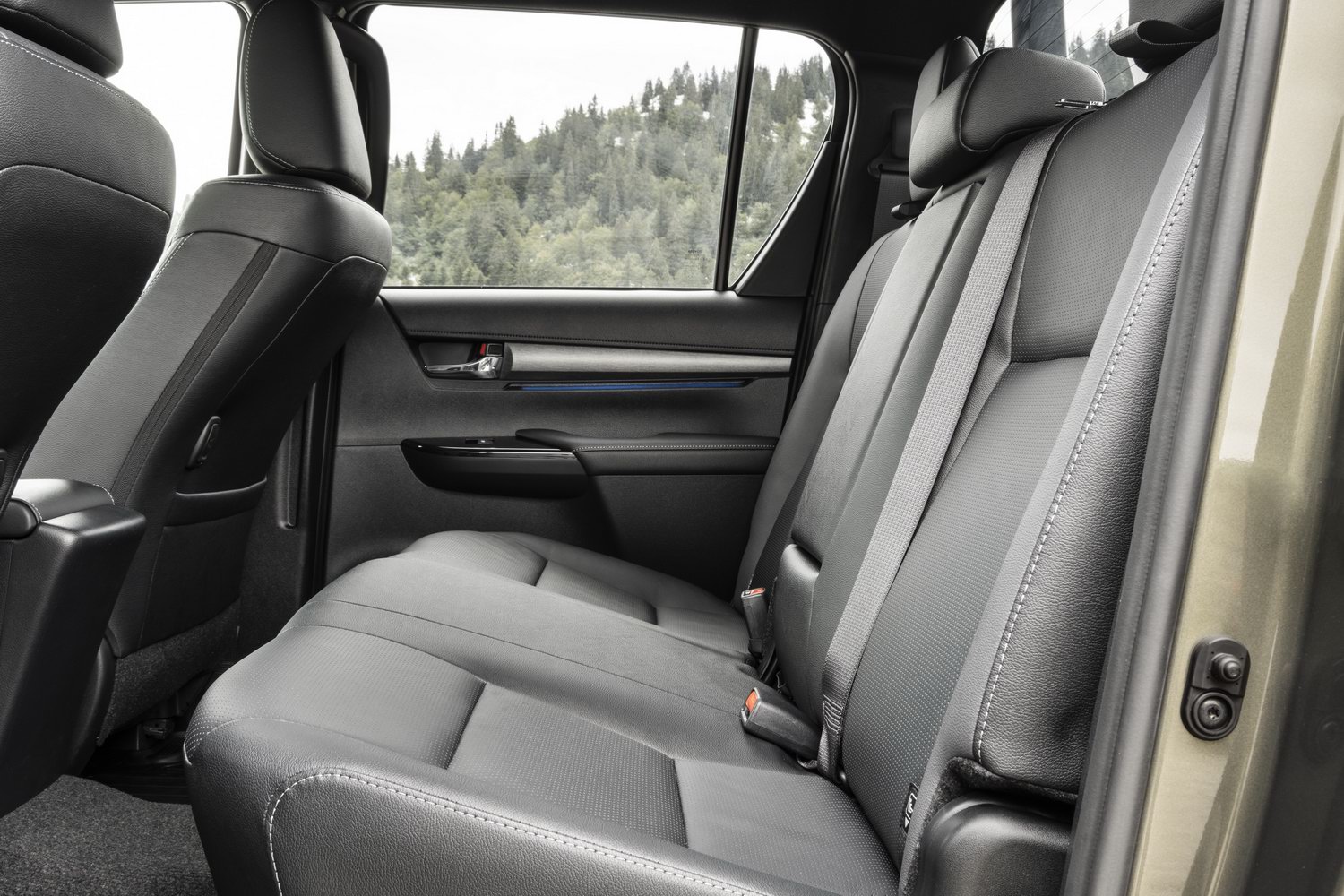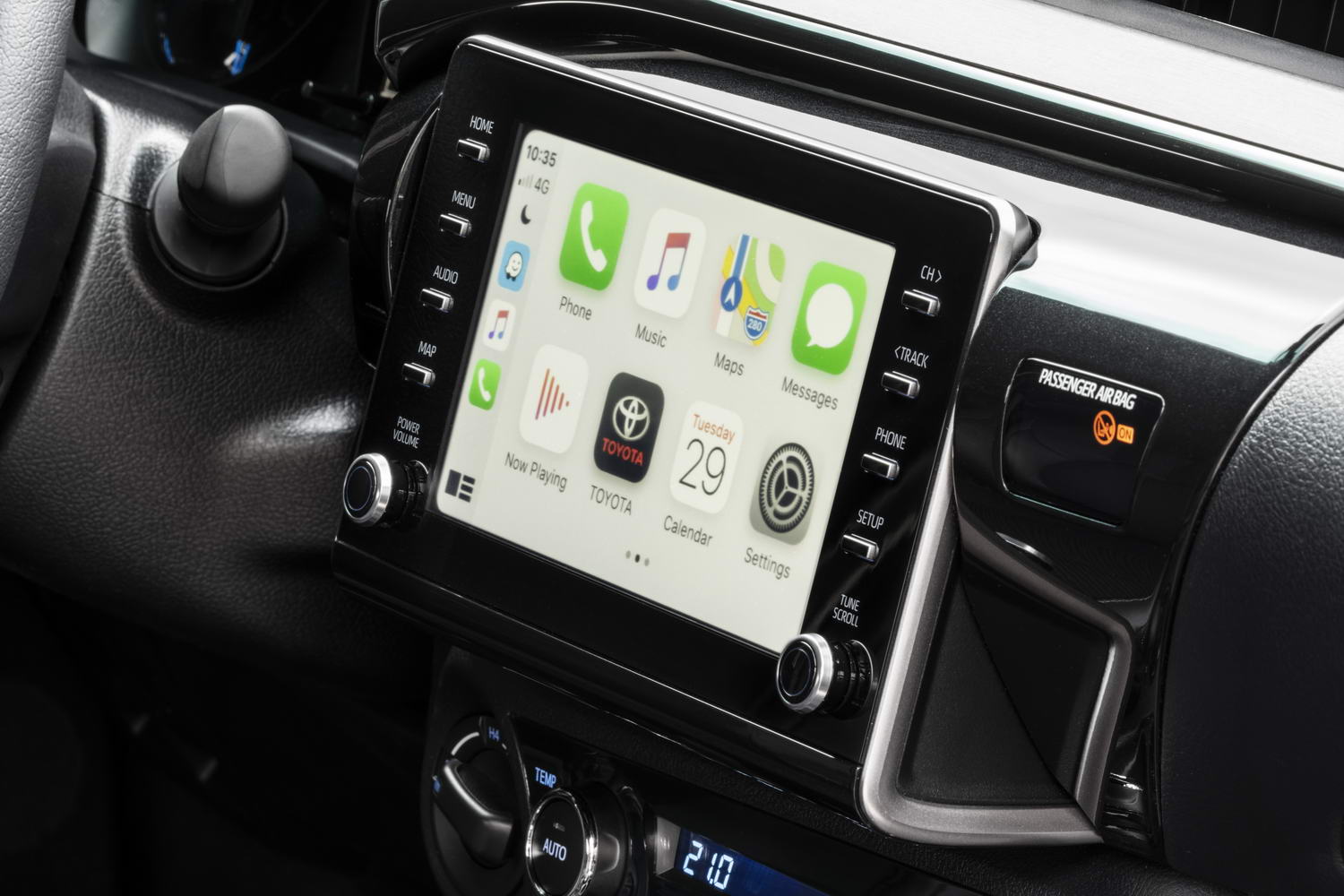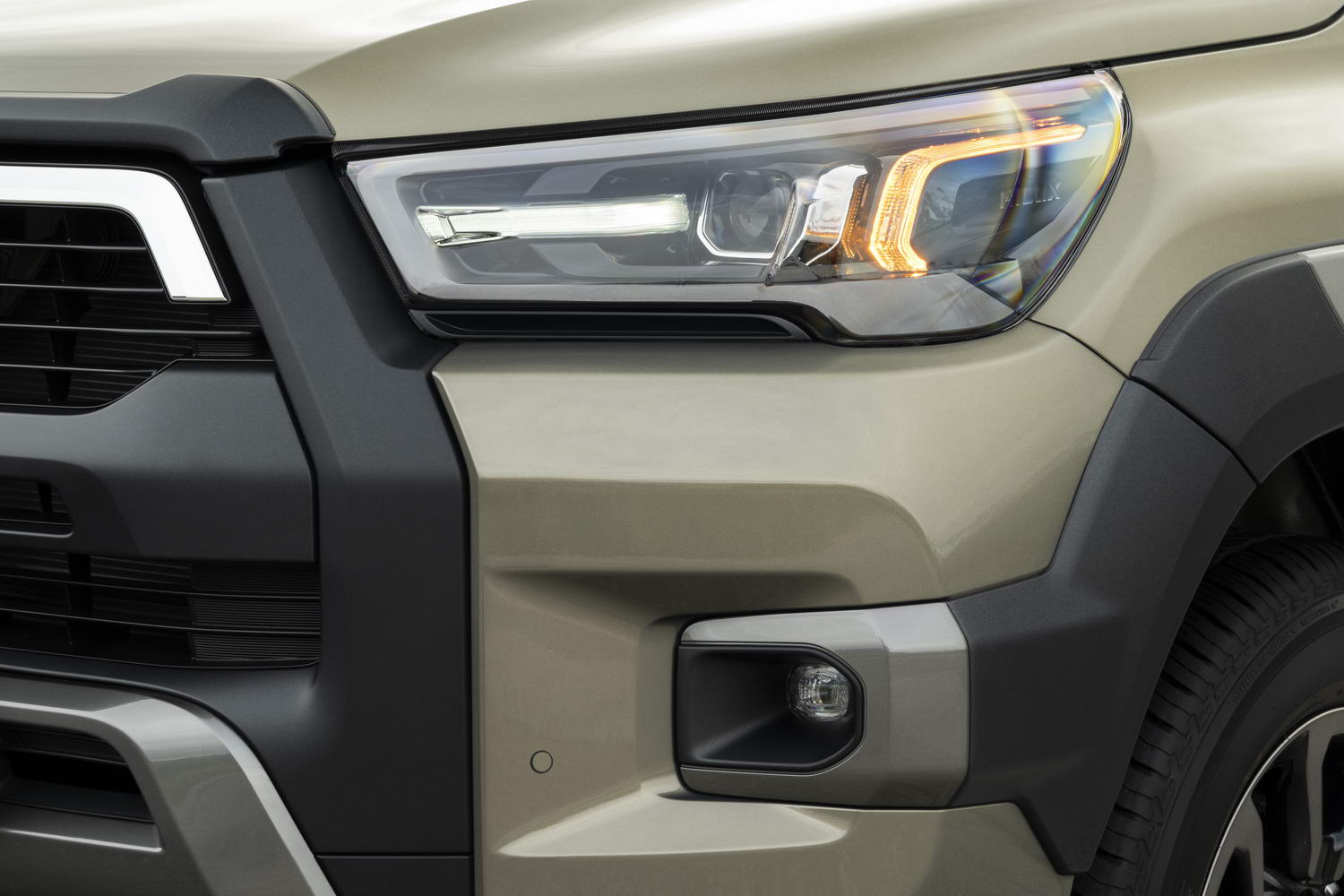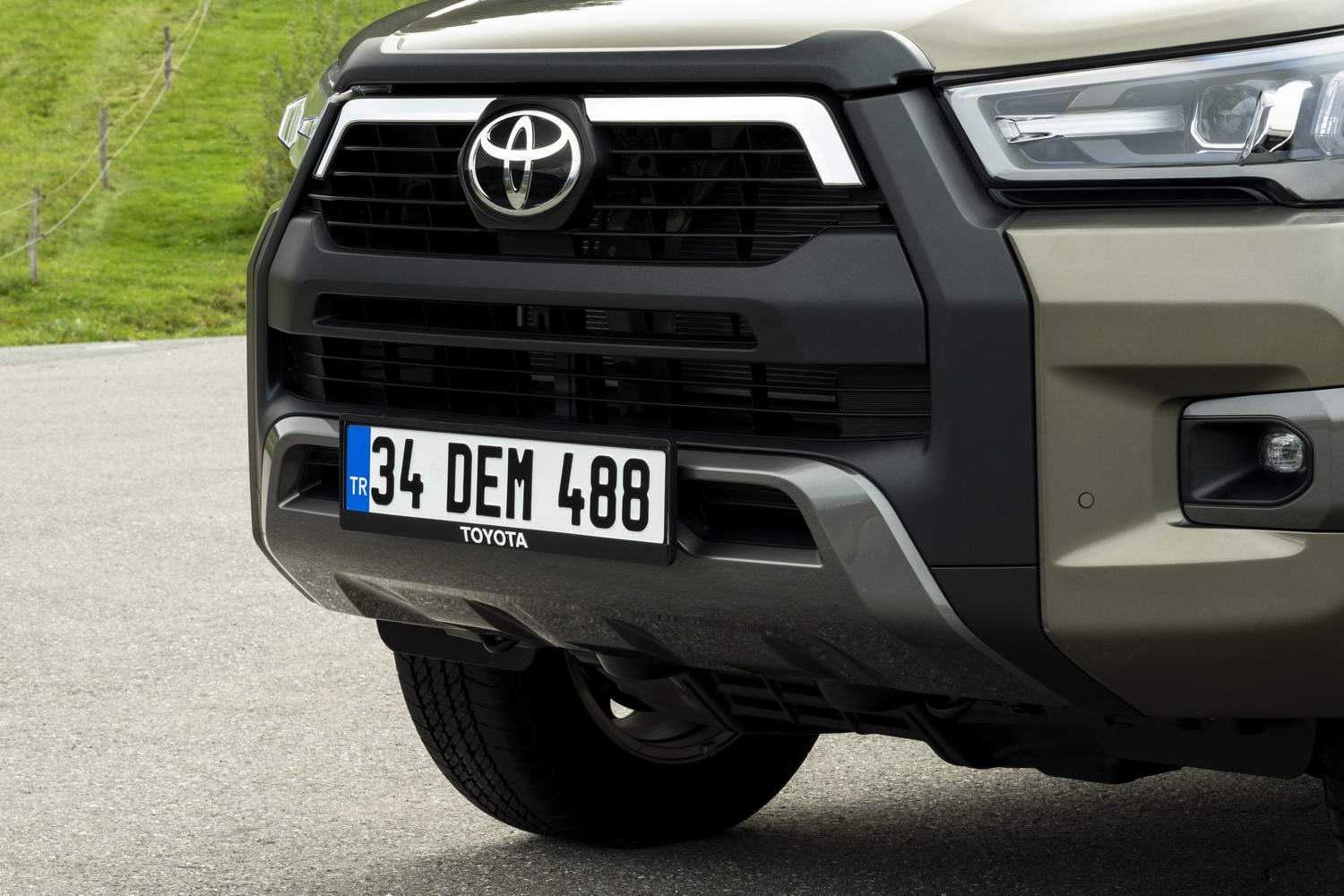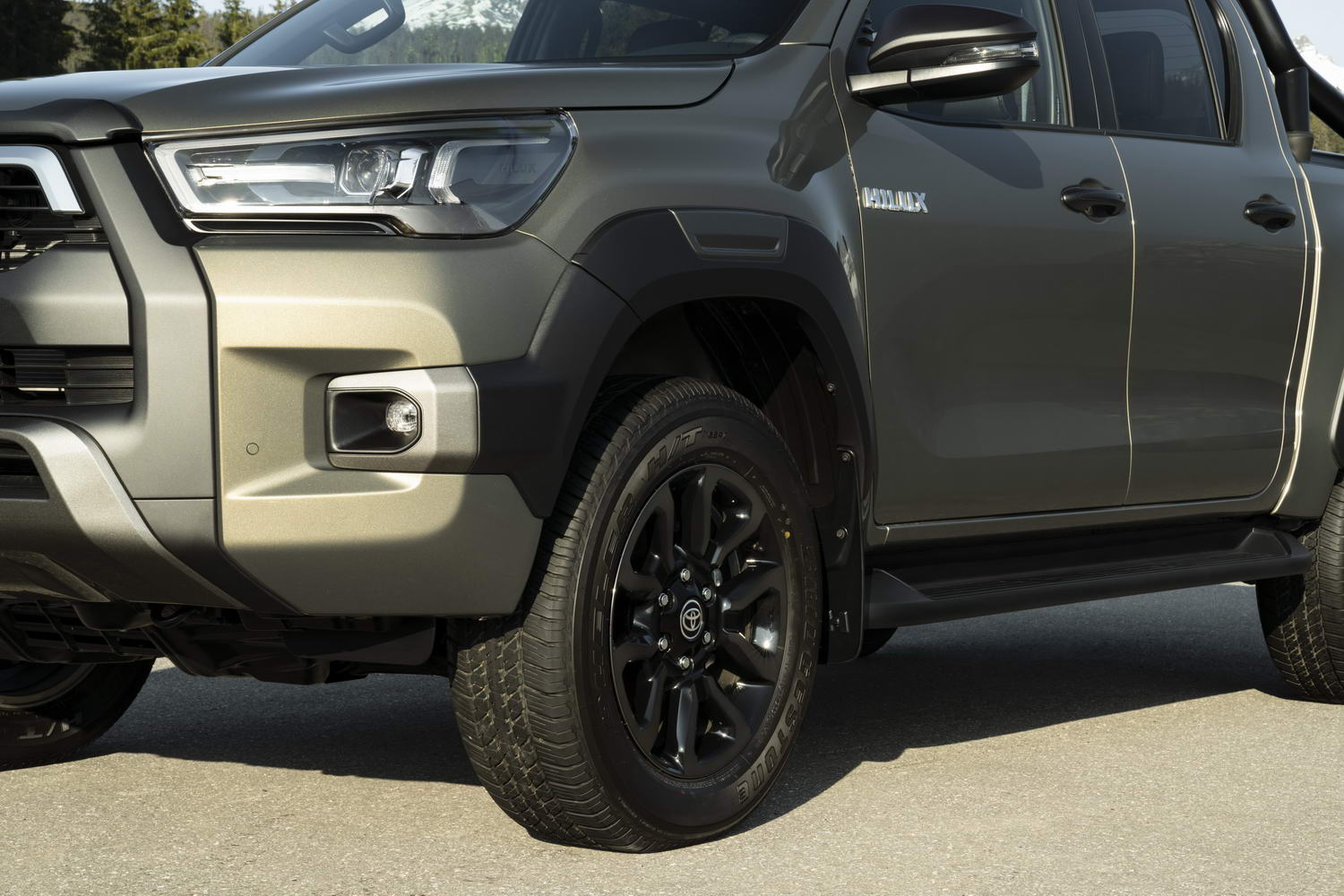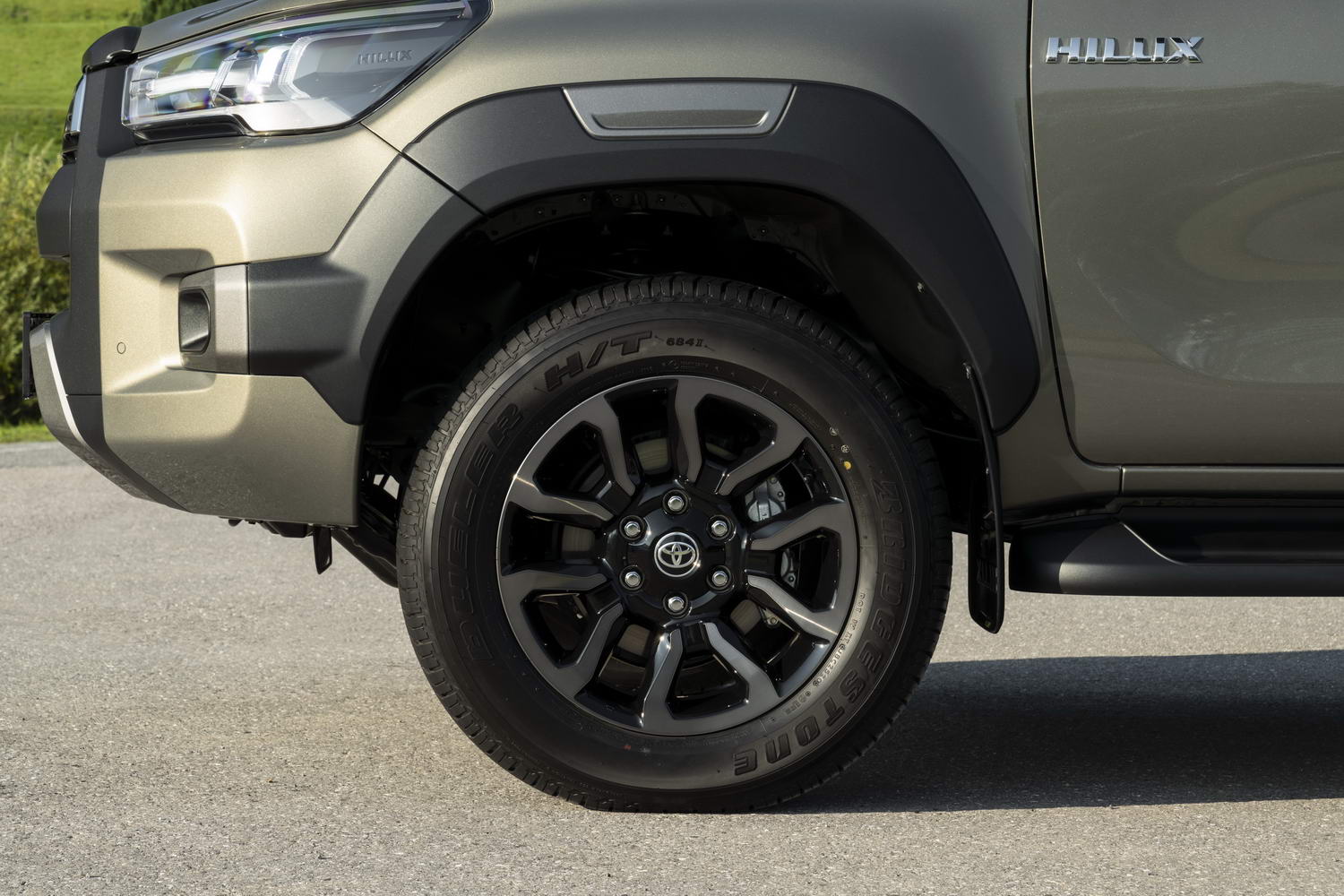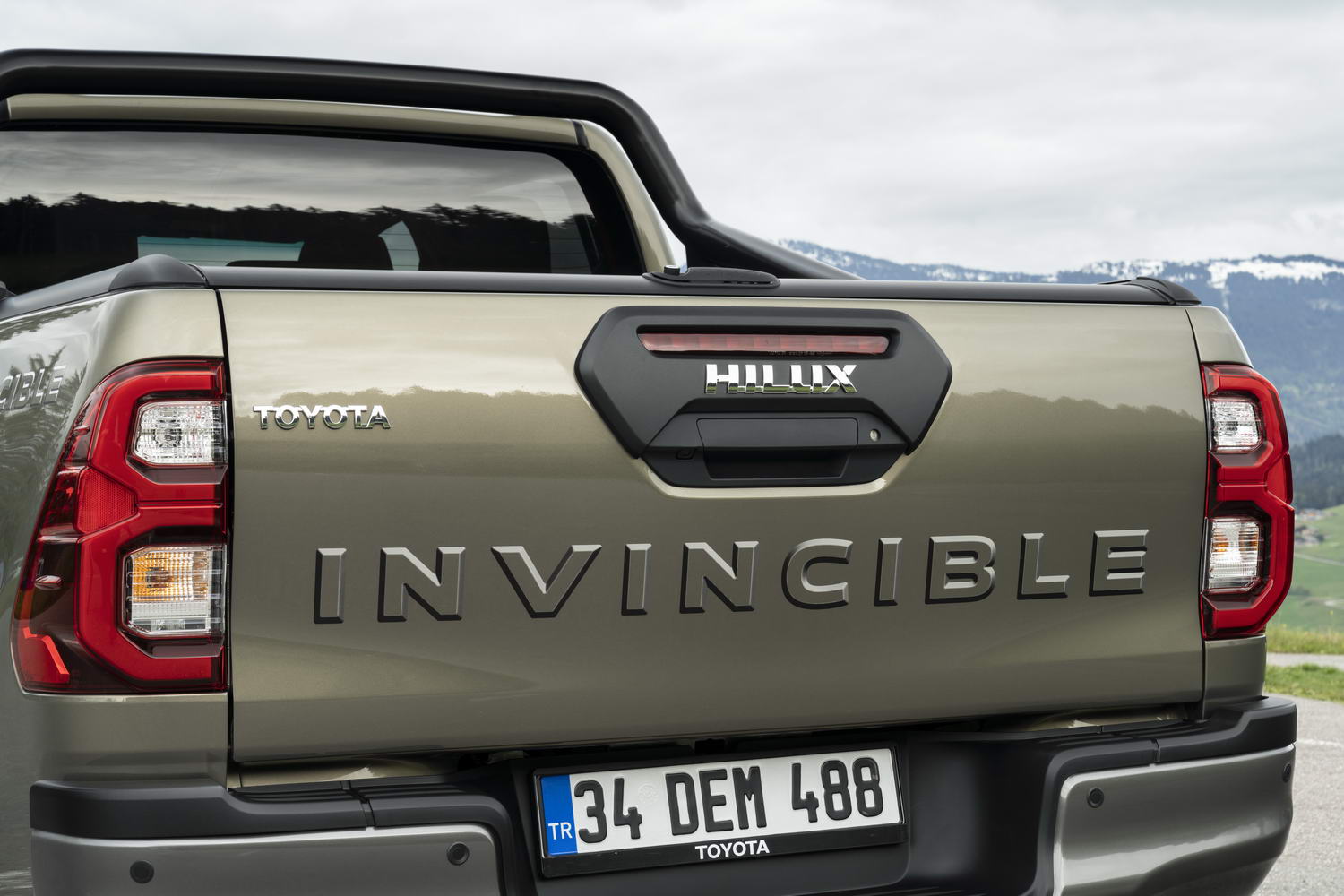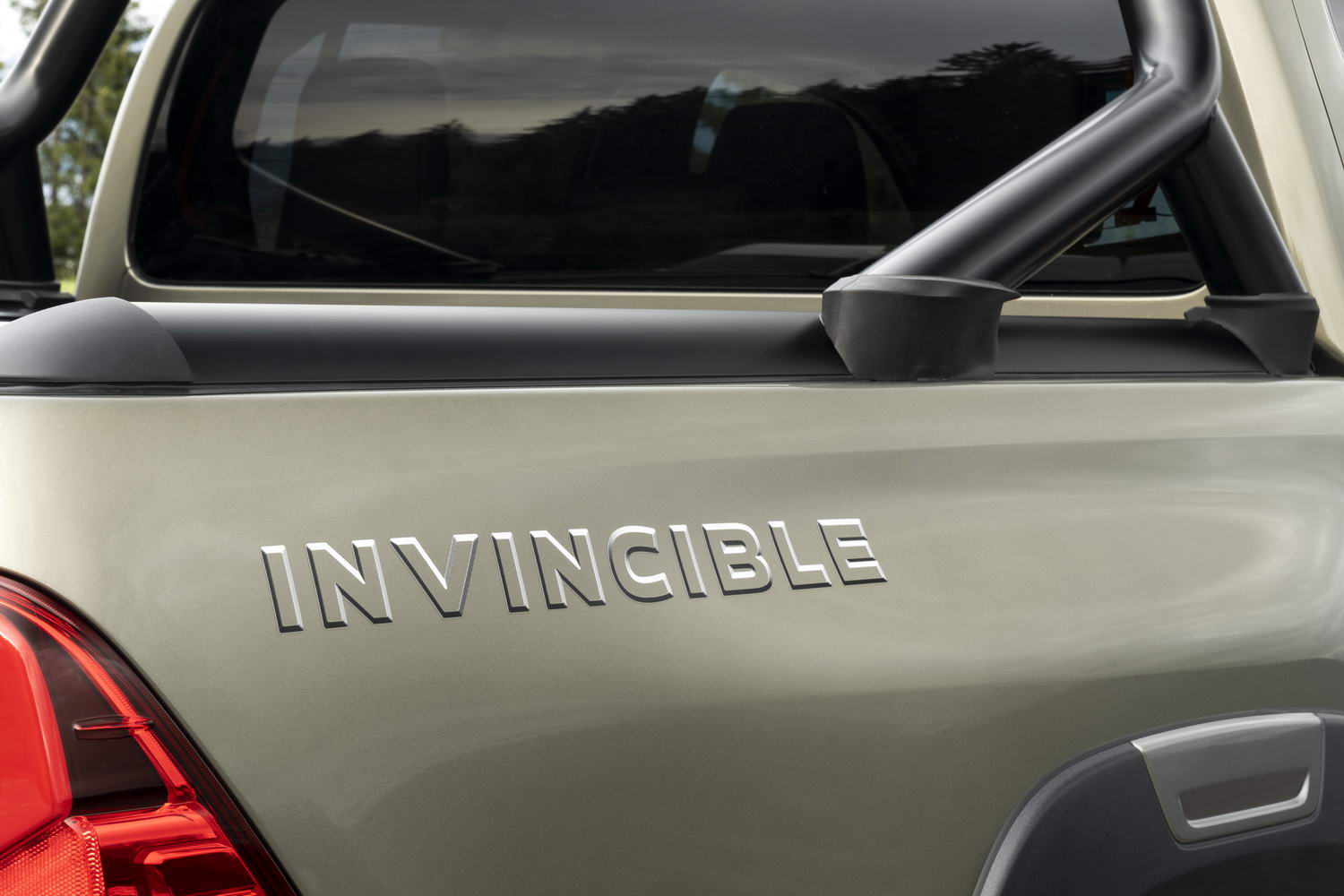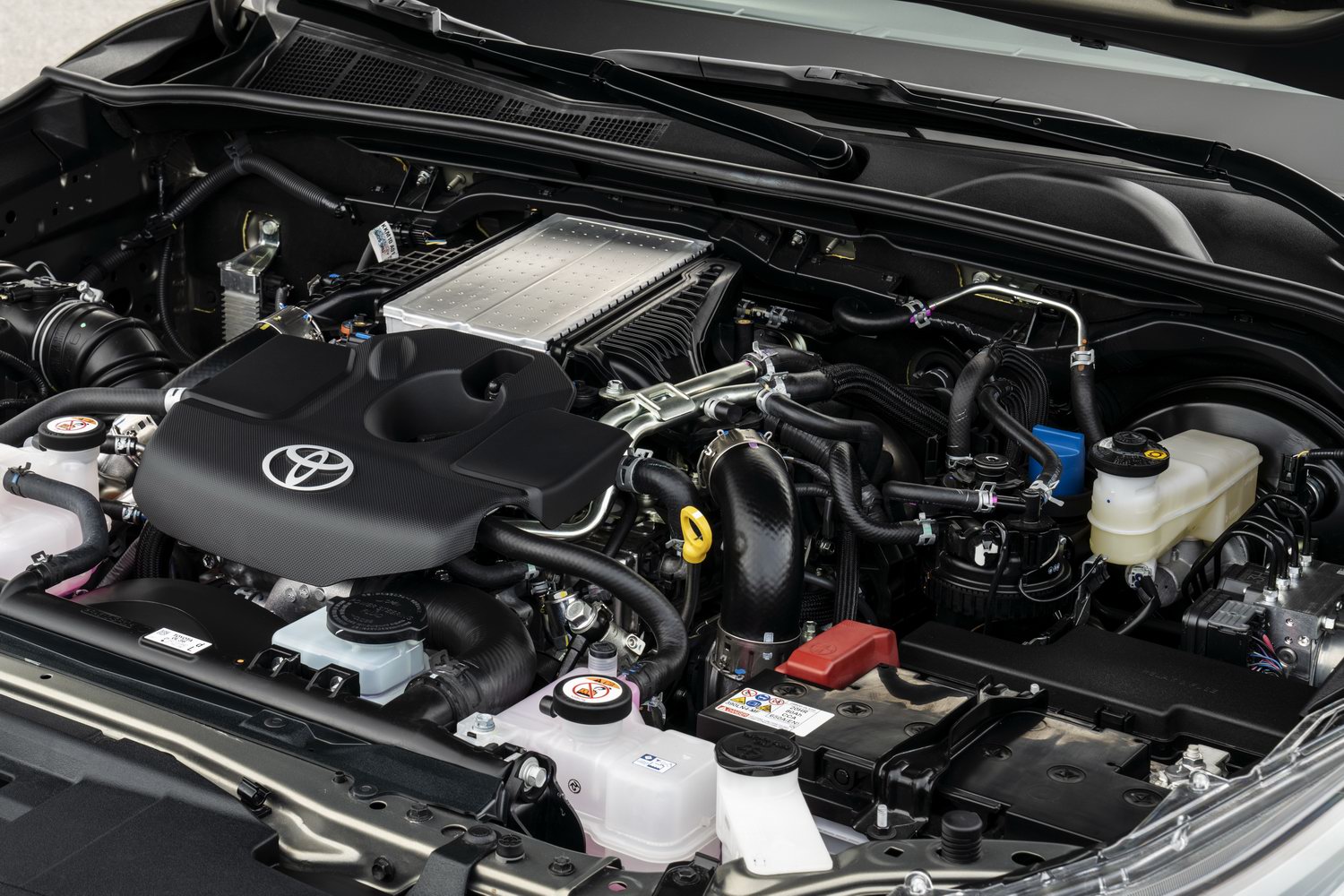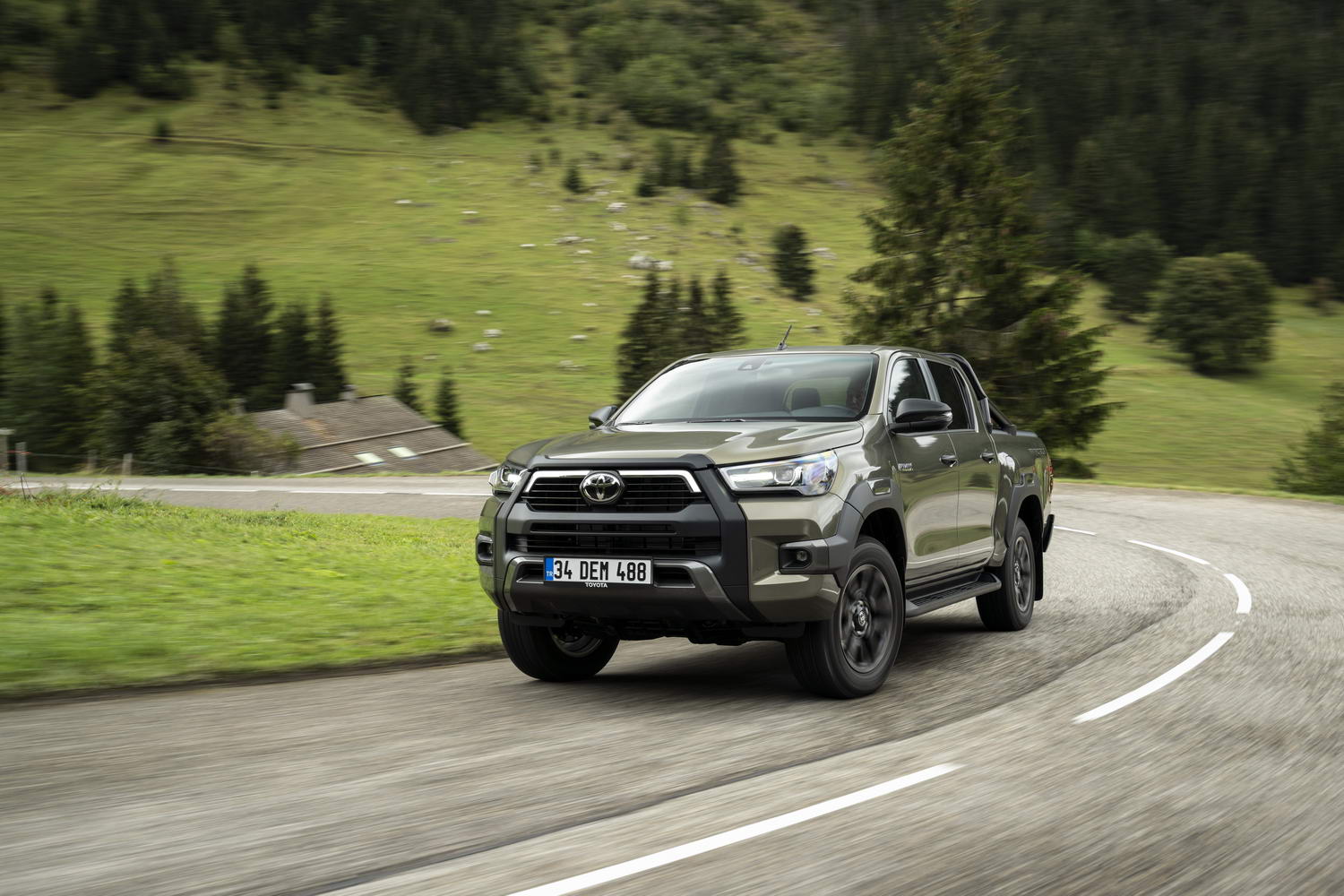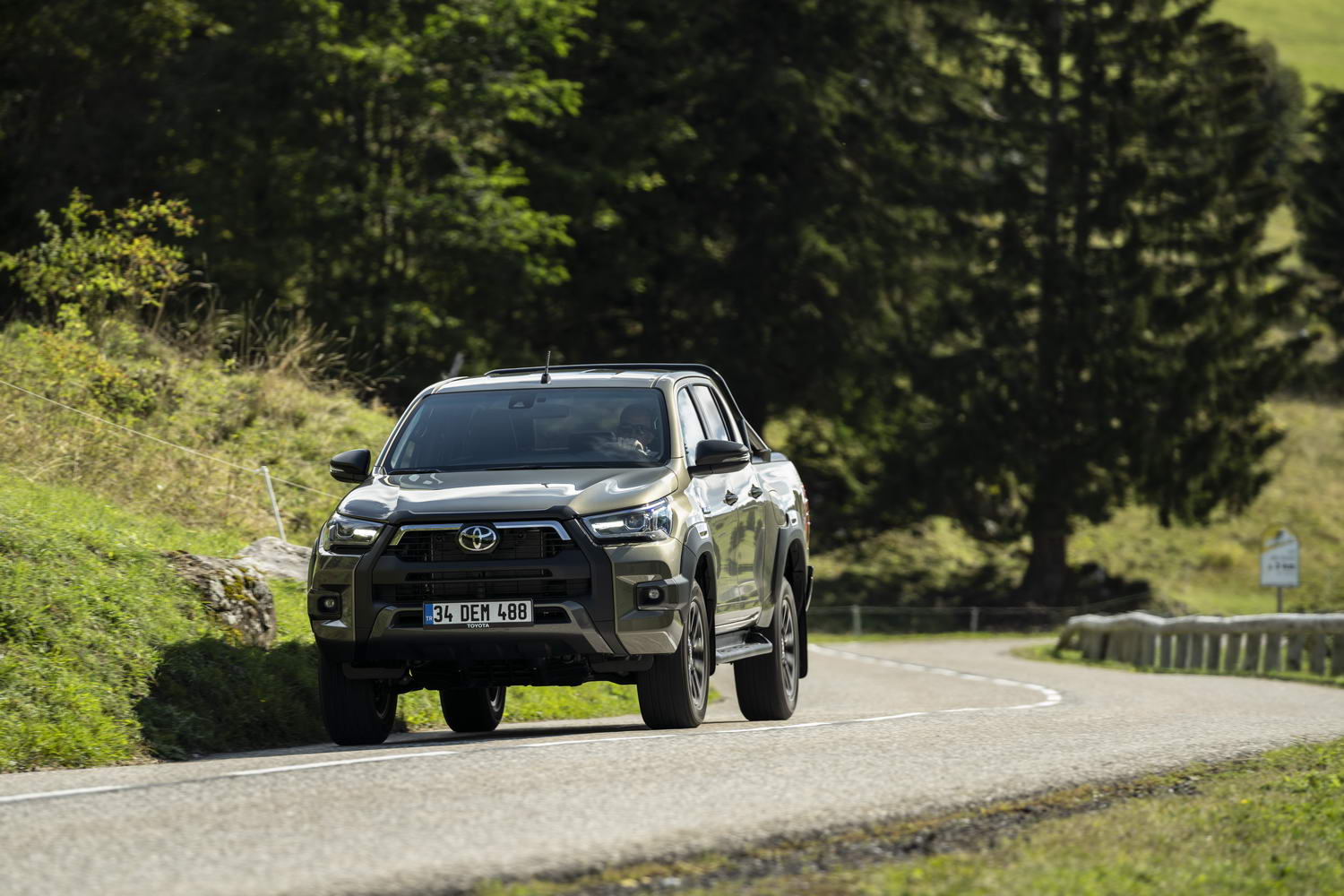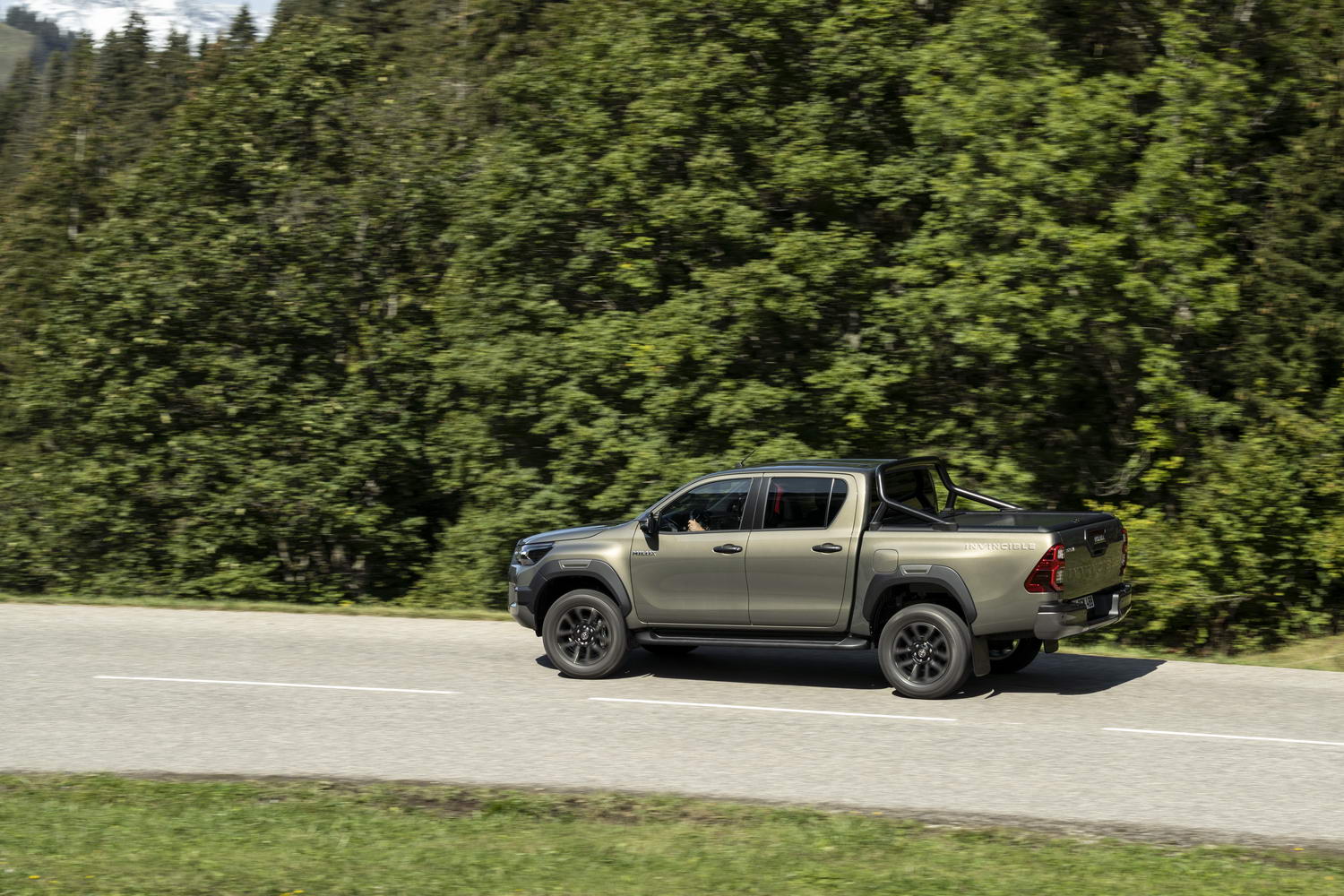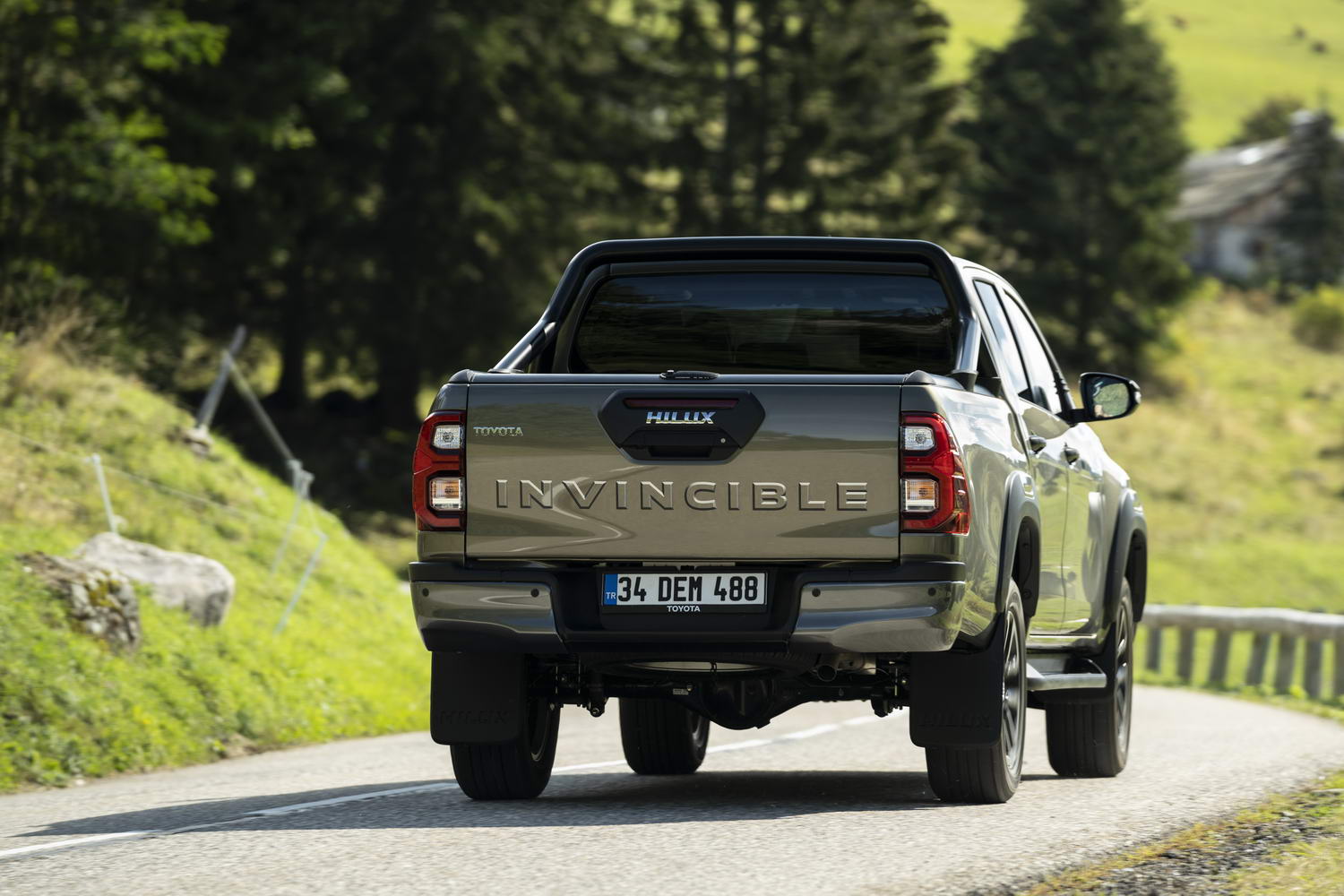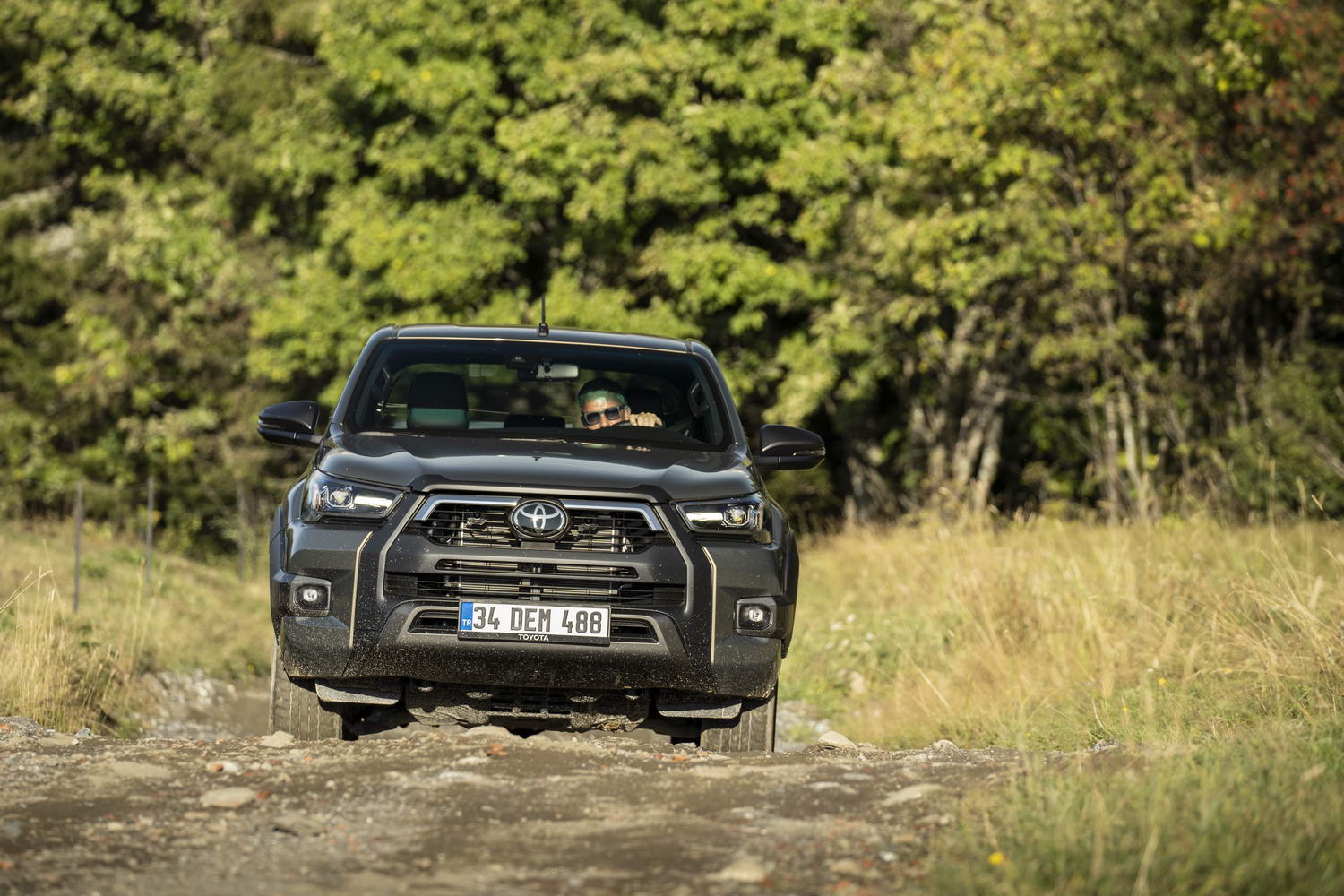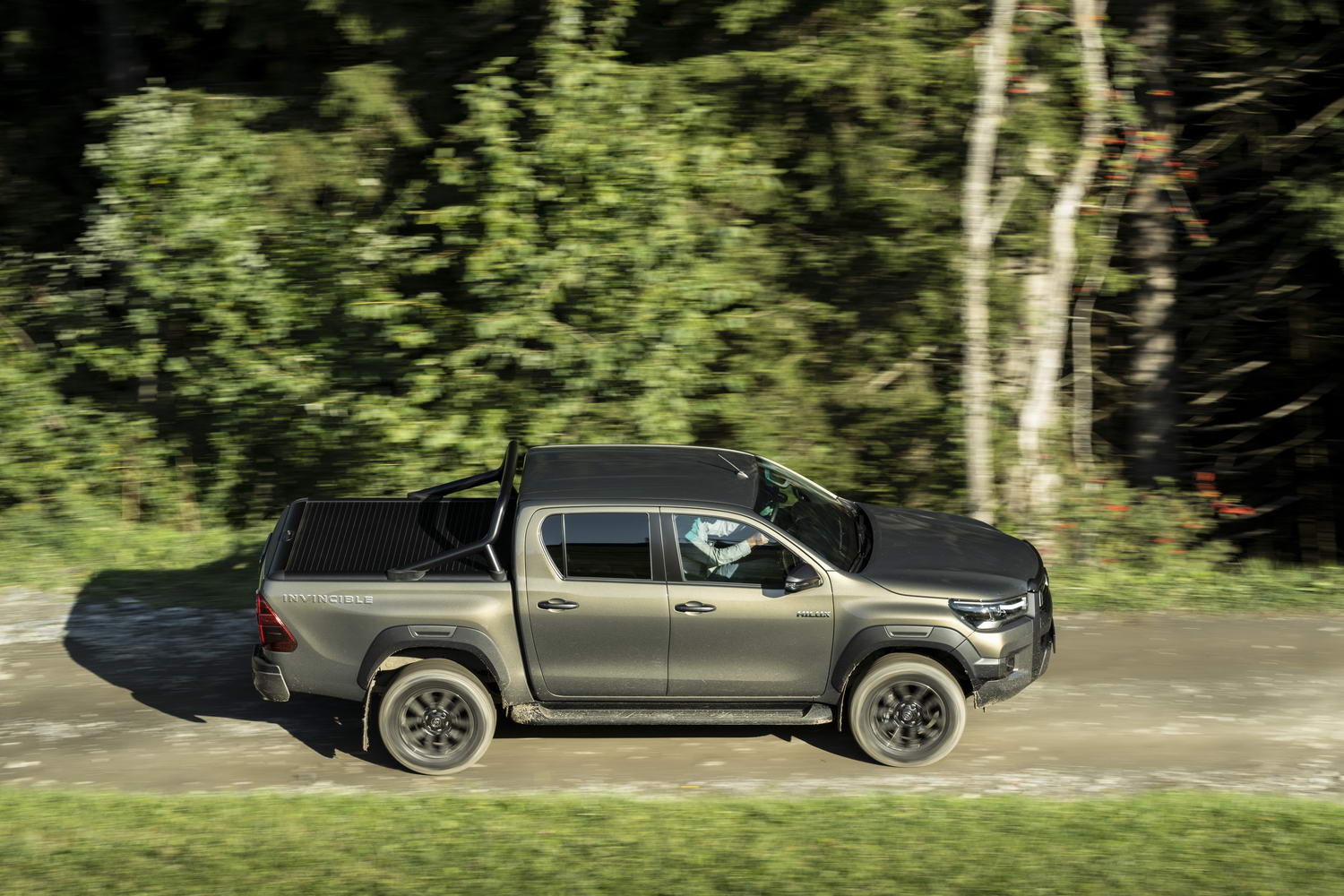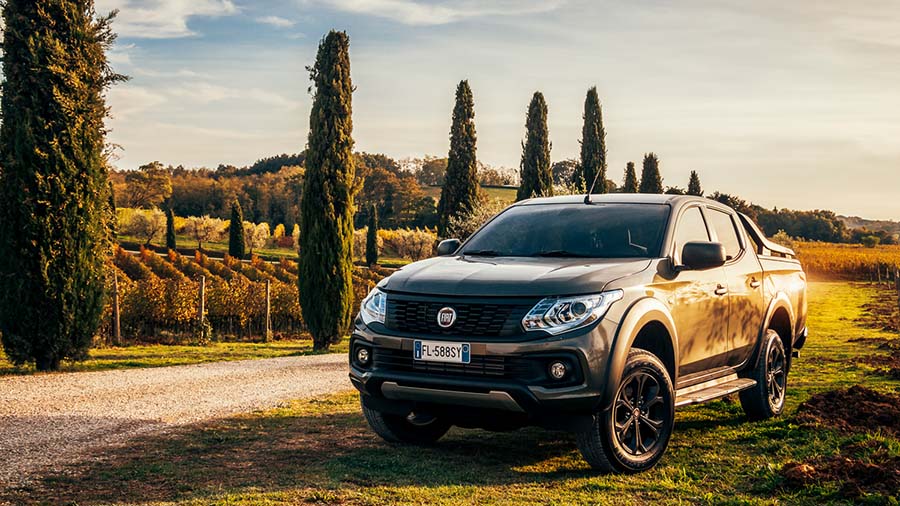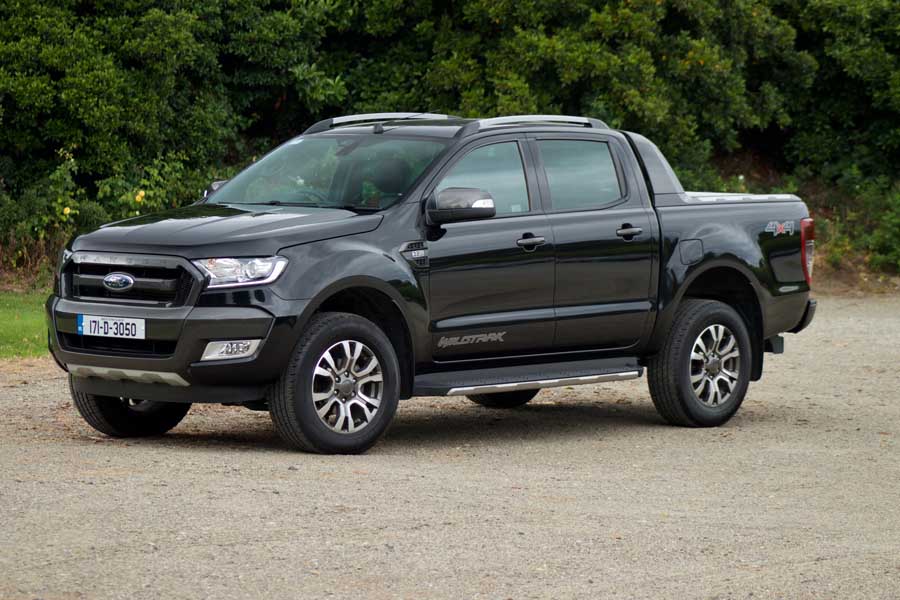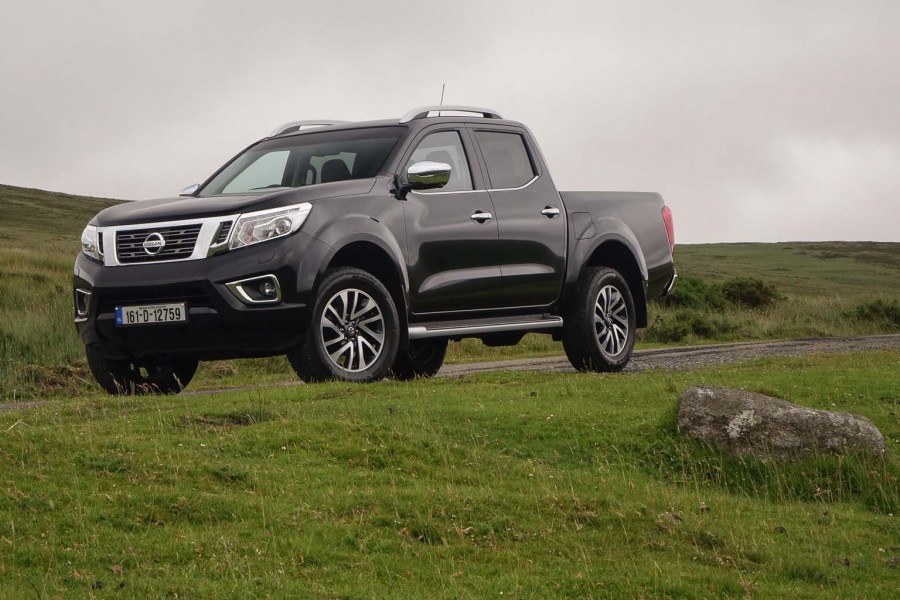Toyota goes chasing the lifestyle and/or private buyers of one-tonne pick-up trucks with its significantly revised Mk8 Hilux. The big news here is that a more powerful 2.8-litre engine joins the fray, while the suspension on all models has been improved to make the long-serving Japanese machine a more comfortable vehicle in which to travel at all times. The good news is this ploy has worked wonders, the Hilux moving to near the top of the class for those of us who want a swish pick-up as a family conveyance, rather than one that will only serve to lug heavy materials around a mud-clogged building site.
In the metal
Although Toyota is calling this the 'New Hilux', it's actually the second facelift of the eighth-generation truck that launched in 2016. However, this time around, there have been more significant changes beneath the skin than on the surface, although we'll go through the visual updates nonetheless. All models have a new radiator grille and front bumper arrangement, as well as subtly re-sculpted rear lights, but it is the top-spec Invincible (see 'What you get for your Money' below) that stands out the most. This model has even chunkier front foglamps, a result of these nose-mounted details blending into over-wheel arch extensions in black that aren't present on any other 2021 model year Hilux. It also gains a different design of tailgate to help mark it out, and the result is a seriously good-looking truck.
Inside, high-spec versions of the Hilux will have a fresh eight-inch infotainment display on the centre of the dash and, for the Invincible, smarter visuals and material finishing, but it's pretty much the same cabin as before. That means it's a good interior, if not the last word in fit and finish - even in this segment, where the dashboards start life as things that might have to be hosed down occasionally. But while the Hilux's passenger compartment might not be the glitziest in the world of pick-ups, it still has plenty of space for four adults (a fifth will be a tight squeeze in the second row) and you know it will be solidly bolted together, so it's unlikely to start rattling and squeaking a few thousand kilometres down the line.
Driving it
Prior to this update, the Toyota Hilux Mk8 used a solitary turbodiesel engine. It was a 2.4-litre unit with 150hp and 400Nm, and while more than 18 million examples of the Hilux have been sold worldwide since it first appeared way back in 1968 - making it irrefutably the best-selling pick-up truck everywhere in the world outside of the USA - it was in danger of being lost amidst a sea of much more powerful competitors in the 2020s. Indeed, market research shows that pick-up buyers nowadays, who are all opting for the most lavishly appointed models in a given manufacturer's range, also want power to go with all the luxury toys and are therefore choosing the drivetrains that give them in excess of 175hp.
Something, of course, that the Toyota - for all its legendary strengths of reliability and durability - could not offer until now. The 2.4 continues and will see service in the more workaday, commercial-biased models in the 2021 model year Hilux range, but there's now a 2.8-litre engine further up the tree. This delivers fully 54 additional horsepower and 100Nm of torque, for peaks of 204hp and 500Nm, although it should be said these numbers are for the 2.8 Hilux fitted with the automatic transmission - opt for the manual gearbox and the torque has to be capped at 420Nm. However, that results in a 0-100km/h time that is slashed by 2.1 seconds (auto versus auto; the manual 2.8 Hilux actually reduces the sprint by 2.7 seconds, as it'll run 0-100km/h in 10.1 seconds instead of the 2.4's fastest time of 12.8 seconds, whereas an auto 2.8 takes a still-respectable 10.7 seconds for the same metric) and yet the economy and CO2 emissions on the WLTP cycle are broadly comparable with what went before.
Then there's the suspension. The usual process with these ladder-framed, leaf-sprung (at the rear) trucks is to set up their suspension as if they were carrying one tonne of weight in the back. This often leads to a bouncy and unrefined unladen ride quality, which can put off buyers who might be thinking of migrating to a pick-up from a more sophisticated SUV. However, Toyota has adjusted the rear leaf springs and tuned the dampers to best suit the Hilux when there's nothing at all in its load-bed, which is more representative of what private buyers do with their trucks. Further mechanical changes include steering that is light and responsive off-road, to prevent driver fatigue (but which weights up at higher pace on tarmac to ensure precise responses), as well as a lower idle speed for the engine (680rpm, instead of 850rpm on the 2.4) to give better manoeuvring control when off-roading. Indeed, an Auto LSD function allows the Hilux to maintain plenty of forward momentum in the rough stuff, even if it is running in the 2H setting and is therefore rear-wheel drive, while a tyre-angle monitor and retuned throttle response in its 'maximum traction' 4L setting should ensure the Hilux is as deeply talented away from metalled road surfaces as it ever has been.
All of these changes add up to a quite brilliant pick-up. The 2.8-litre engine is notably more subdued than the 2.4 and obviously more muscular too, picking up speed in the mid-range with an urgency that the Hilux has never had before. As a four-cylinder turbodiesel with a large swept capacity, it can still get a bit noisy and raucous beyond 3,000rpm, and the six-speed automatic isn't exactly an exemplar of its type, but the engine never becomes too harsh nor intrusive and you can easily churn about the place sub-3,000rpm at a decent lick, where the turbodiesel remains a background noise. Wind and tyre noise are well subdued in what is a tall and not very aerodynamic shape, but it's the ride quality you'll love the most. Big compressions, such as sunken manhole covers and the like, continue to send a shudder through the Toyota's two-piece framework, but for the rest of the time you'll marvel at just how civilised its ride comfort is. On motorways and well-kept main roads, it's definitely far closer in feel to 'decent SUV' than it is to 'agricultural workhorse'.
And, as promised by those changes we outlined above, it has lost none of its glittering ability when it comes to venturing away from the beaten track. On a pretty tough off-road course with some very deep wading sections, as well as a short run that induced massive axle articulation and 'wheel lift', lots of cloying wet clay and narrow, rubbly tracks layered thick with rotting leaf mulch, the Hilux was absolutely unstoppable. What makes this even more impressive is that the Invincible does not run on mud-and-snow tyres as standard; no, it wears road tyres. Get the Hilux onto a set of proper knobbly alternatives and it should never let you down.
So, with the changes made, we're not ready to say the Toyota is out-and-out class-leading in the pick-up sector, but what was once a worthy but rather primitive truck is now one with suitably urbane manners and enough robust performance to stand shoulder to chunky shoulder with some of the even-more-powerful rivals in this sector. Things with V6 engines, for instance...
What you get for your money
Toyota Ireland sells the Hilux with two body styles, two engines, two gearboxes and three trim levels, making for a varied line-up. Base spec is DLX, which is the only grade at which you can have the Single Cab model, which comes with steel wheels and black bumpers - this is the one that is aimed squarely at commercial users. The DLX is a little more luxuriously specified if you opt for the Double Cab variant, but this is still more of a business-use machine than a direct replacement for an SUV, while the only drivetrain option found here is the old 2.4-litre turbodiesel engine with a six-speed manual gearbox.
It is at SR5 level where the new 2.8-litre engine becomes an option, where it is available with either a six-speed manual or a six-speed automatic transmission. The 2.4-litre with a manual gearbox is the standard-fit powertrain, however, and the SR5 is only available as a Double Cab. In terms of equipment, it brings in most of the luxuries that will tempt private buyers to make the leap to a truck, including 17-inch alloy wheels, the new eight-inch Toyota Touch infotainment system with Apple CarPlay and Android Auto, a rear-view camera, climate control, side steps, rear privacy glass, power-folding and heated door mirrors, and - on 2.8-litre models - heated seats and a front-wiper de-icing system. Prices for the SR5 start at €38,955. The Invincible, as tested here, is aimed squarely at non-commercial users, offering a luxury specification including 18-inch alloys, dual-tone perforated leather seats with heating, LED front lighting, front and rear parking sensors, navigation for the infotainment, keyless entry and go and ambient lighting in the cabin for a price approaching €50,000. It is only available as a Double Cab with the 2.8-litre engine and automatic gearbox, as a result.
Summary
A more powerful engine, significantly increased mechanical and rolling refinement and sharper exterior looks are the hallmarks of the 2021 model year Toyota Hilux range and, while a range-topping Invincible model like this might be pretty pricey, it now feels like a pick-up that's operating right at the cutting edge of its market sector. The Hilux has always been a name you could depend on if you were after a workhorse truck, but with these updates it's now also one you can desire if you're after a flashier, private-use vehicle of this type.

